you to our Lieutenant Governor Janice Filmon
Atthe end of the 19th and the begin ning of the 20th century, the great world powers fought for the division of the colonies around the world as well as for military, political and economic suprema cy in Europe. Canada joined the First World War in 1914, and by 1915 there were 40,000 Manitobans in uniform. They came from different religious, social and language backgrounds to gether united in one goal, winning the war and all of them were equally proud to be Canadians. Although it is difficult to tell how many people died during the war, it is estimated that around 7,760 Manitobans died out of a total population of 600,000. Thousands more were wounded in body and soul.
On November 11, an Armistice Day, we honour vic tims of the First World War. In 1918 on that day in the forest Compiegne near Paris, in the carriage of French Marshal Ferdinand Foch, the commander of allied

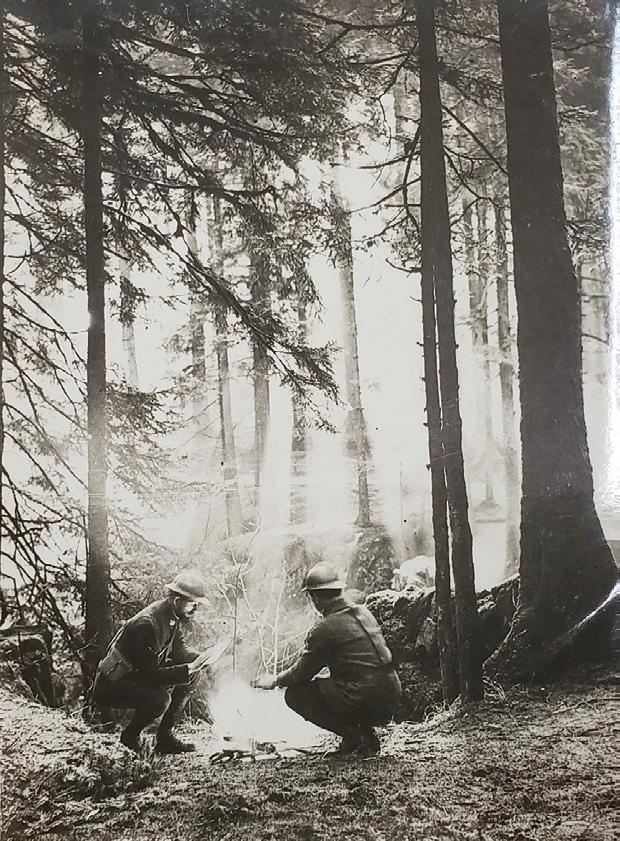


diabetes
are insulin resistant.

WhenI ask people what they believe is the cause of disease, I get all sorts of answers. Inflammation, diet, lack of exercise, exposure to en vironmental chemicals, etc. Re search confirms that insulin resis tance is the key contributor to a wide range of health conditions. Most people aren’t aware of or haven’t even heard of insulin resis tance, and most don’t know they have it. Yet estimates are that up to 88% of adults in the U.S., and half the adults in India and China
In the early 1900s, the main causes of death were gastrointes tinal infections, tuberculosis, and lung infections (pneumonia or in fluenza). Thanks to improved san itation, better personal hygiene, and some incredible drugs, infec tions are no longer the primary cause of death, although exposure to viruses or infections remains a serious risk for those with existing health problems (including diabe tes, heart disease, and insulin re sistance).

Over 90% of deaths today are from heart disease, cancer, Alzheimer’s disease, diabetes, and cerebrovascular disease (i.e.
stroke). If I told you that some cases of all these diseases are pre ventable and that you can improve your quality of life for the last 5 to 10 years or more, would you be willing to make some important changes to your diet and lifestyle to control insulin resistance? What is Insulin?

Well known as a medication for those with diabetes, insulin is a hormone that moves glucose from the blood to our tissues and organs, including the brain, heart, muscles, and liver. Insulin is pro duced by a small organ under the stomach called the pancreas (un less you are a type 1 diabetic). In

Iwould
like to take this opportunity to thank our 25th Lieutenant Governor, Honour able Janice Filmon for her many years of public service to Manitobans, first as the wife of Premier Gary Filmon (1988 – 1999) and then as the Lieutenant Governor of Manitoba (2015 – 2022).
Hon. Janice Filmon is only the second female LG in Manitoba. The first one was Pearl Mc Gonigal who served from 1981 to 1989. As she said at the time of her appointment, “It’s about time for a second female Lieutenant Governor.”
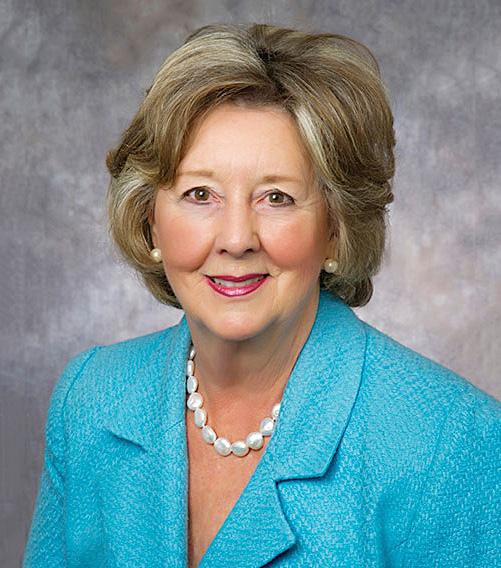
Mrs. Filmon was appointed as LG on June 19, 2015; she was the viceregal representative of Queen Elizabeth prior to the Queen’s passing and for a short time, for King Charles III.
Each of the ten Canadian provinces has a lieutenant governor. He or she is appointed by the Governor General, on the recommendation of the Prime Minister, usually for a period of five years. A lieutenant governor is the highest-




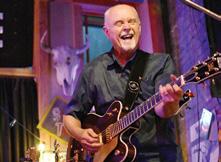

November 2022 whatsupwinnipeg.ca
“Wait for me, and I will surely come Just wait for me long enough…”*
– Konstantin Simonov
Sanja Rossi
Nathan Zassman
Understanding
The real ‘cure’ for almost all diseases
Myrna Driedger
We remember This roast is truly a feast! 10 In Remembrance 7, 8 A rockin’ birthday party! 18 5 ‘Thank you Janice Filmon’u Celebrate the Year of the Garden all year long with Canada’s Local Gardener by subscribing today! Check us out at localgardener.net Official English Language Magazine Check out Flora & Fauna the new E-Digest presented by Canada’s Local Gardener! Find out more at localgardener.net How will you celebrate? Thank
FAST DENTURES 204-947-1807 7 ‘We remember’u 16 ‘Understanding diabetes’u
The surroundings in which the French Armies fought
in
Alsace.
Soldiers
at a campfire.
Janice Filmon




2 whatsupwinnipeg.ca November 2022 Donate to help kids like Emma today. Kids in emergencies can’t wait for care. YOUR DONATION MATCHED DONATION *Thank you to The Talbot Family for matching donations! CHFM 2022 Holiday Campaign - Lifestyles Half Horiz - 9.875x7.875”.indd 1 2022-10-27 11:44 AM Lest We FORGET
Follow us online at: whatsupwinnipeg.ca

Facebook: Lifestyles55
Twitter: @Lifestyles55
PUBLISHER
Pegasus Publications Inc.
EDITOR Dorothy Dobbie dorothy@pegasuspublications.net


ART DIRECTOR Karl Thomsen karl@pegasuspublications.net
GENERAL MANAGER Ian Leatt ian.leatt@pegasuspublications.net
CONTRIBUTORS
Edward Burgener, Gary Brown, Dorothy Dob bie, Rick Duerksen, Hon. Myrna Driedger, John Einarson, Michael Gibbens, Stefano Grande, Hon. Scott Johnson, Jim Ingebrigtsen, Ian Leatt, Myron Love, Fred Morris, Mani toba Seniors Coalition, Manitoba Association of Senior Centres, Connie Newman, Peggy Pendergast, Brent Poole, Sanja Rossi, Senaka Samarasinghe, Wayne Weedon, Nathan Zass man.
Canadian Publications mail product Sales agreement #40027604
ADVERTISING 1-888-680-2008 info@pegasuspublications.net
SUBSCRIPTIONS
If you would like to receive Lifestyles 55, we offer both monthly newspaper and online formats. To place your order, call 204-940-2700. Subscriptions are $48.00 per year, plus tax. American Express, MasterCard, Visa and cheque accepted. To view a back issue online visit lifestyles55.net


Published monthly by: Pegasus Publications Inc. 138 Swan Lake Bay, Winnipeg, MB R3T 4T8 204-940-2700 whatsupwinnipeg.ca
DISTRIBUTION
Available at over 100 locations from Winnipeg, Brandon, Steinbach, Morden, Selkirk, Flin Flon and The Pas. If you would like bulk copies of this publication, contact Ian Leatt at (204) 940-2707 or ian.leatt@pegasuspublications. net. Also available digitally at whatsupwinnpeg/ lifestyles and on Facebook: Lifestyles55
EDITORIAL SUBMISSIONS
Call Dorothy Dobbie at (204) 940-2716 or email dorothy@pegasuspublications.net for more information and guidelines.
Any opinions expressed in columns by our contributors are their own opinions entirely and are not necessarily shared by Pegasus Publications Inc. All information presented by the contributors is the responsibility of the writers.
Lifestyles 55 is published monthly. Reproduction in part or in whole is prohibited without seeking permission in writing from the publisher.

Copyright Pegasus Publications Inc.
ISSUES IN THE NEWS
Is reconciliation closer than we think?
“How can two communities be on an equal footing if one is feed ing the other? That immediately changes the balance and puts the one on the receiving end at a disadvantage.”
Dorothy Dobbie
Thequestion that is seldom answered in a concrete way, is “What is reconciliation?”
According to the Government of Canada, “Recon ciliation is an ongoing process through which Indigenous peoples and the Crown work co operatively to establish and maintain a mutu ally respectful framework for living together, with a view to fostering strong, healthy, and sustainable Indigenous nations within a strong Canada.”
That leaves out the rest of us and it is not enough.
In Australia, this exercise has been going on since 1991. “In Australia, ‘reconciliation’ refers to bringing together Aboriginal people and non-Aboriginal Australians. Reconciliation is not something that one decides to ‘do’ – it is a process, at the end of which there may be rec onciliation, but this can never be guaranteed.”

South Africa faced this question starting in 1995, and still has not resolved the question. But they say, “It is important to recognize that reconciliation is not one thing: it is a combination of processes which, taken together, have the desired results of addressing the past, build ing trust, building social cohesion and creating sustainable peace.”
According to the Canadian Truth and Reconciliation Com mission, “. . . Reconciliation is about establishing and main taining a mutually respectful relationship between Aboriginal and non-Aboriginal peoples in this country.”
Economic reconciliation
All these concepts are followed by a lengthy list of social interaction norms but none of them talks about access to eco nomic opportunity. Yet how can two communities be on an equal footing if one is feeding the other? That immediately changes the balance and puts the one on the receiving end at a disadvantage.
It does not have to be this way, and a growing number of people at the grassroots of both communities are realizing this. Their answer is to look for mutually beneficial opportunities and those opportunities rely on business and the equity im plied in business dealing. It turns out that Indigenous people are pretty canny at making deals for the benefit of their people. Their new business deals go well beyond owning casinos.
Take development in northern Manitoba. Mineral resourc es are found mainly in central and northern regions, an area where conservationists and environmentalists have a deep in terest. Increasingly, as miners discover new deposits and cor porations look to exploit them, the value of developing cooperative and mutually beneficial deals with the First Nations Treaty Rights holders becomes more important. The compa nies would rather deal with those with hereditary interest in the land than social warriors from the south.
This is a good thing because it paves the way for FN com munities to develop interests in the enterprises and that leads to sustainable economies. New royalty deals are being made, complete with written obligations to restore the mined-out
deposits and bring the land back to its original condition. Mining companies need more than mineral rights, however. They need labour and are willing to enable young Indigenous people to get the academic and practical skills they need to work in all aspects of the operation.
Deals in place
This pays off down the road as illustrated by Hydro which, in more modern agreements, has included, in addition to cash settlements, options for continued economic benefit. Onne example is the Fox Lake Cree Nation agreement for the com munity to fulfill certain resource contracts with the corporation. This has given Fox Lake an economy into the future, but Hydro also com mits to “Remedial and Pollution Abatement”, protecting the land for the future.
Their agreement is not perfect, but it is a start down the road to true economic reconciliation.
So, it is with other land use agreements where First Nations buy out and take over ownership and management of certain assets. The Arctic Gateway Railroad to Churchill is one of these.
Another is the emerging deal between Nee StaNan, an interprovincial Indigenous consor tium, to establish a heavy goods railroad from Amery near Gillam to Port Nelson. NeeStaNan would collaborate with the Indigenous-owned Artic Gateway to use the rest of the line from Hudson Bay, Saskatchewan to Amery. In this way, two corporate Indigenous entities do business that com plements one another. Everybody wins. The “white” commu nities benefit by having a reliable transportation route to take goods such as potash and heavy minerals to Port Nelson and the world, while the northern domestic community and the international food industry is serviced through Arctic Gate way, to and through Churchill. Meanwhile, the two Indige nous corporations earn from control of the right of way, like the national railways do.
Another such arrangement is under consideration in the south where a First Nation stands to gain from collaboration with a well-established business that wishes to sell the FN its land and assets while guaranteeing the transfer of operational knowledge to the new owners for a time. More on this when the entity is willing to go public.
Recently, the Manitoba Government made a deal with Opaskwayak and Mosakahiken Cree nations and Norway House to share up to 45% of forestry royalties earned from Canadian Kraft Paper, Louisiana Pacific, and Spruce Products Ltd., the largest forestry operations in Manitoba. These agree ments include remediation and reforestation. Up to 38 per cent of the folks employed in the operations are First Na tions and the royalties provide earnings that can help establish other enterprise.
Perhaps not as big financially but as significant from the viewpoints of communities, is the Emporium, led by Crystal Kolt and a community arts organization in Flin Flon with support from the University College of the North. They have created a Northern Internet store where First Nations art and artisanship can find a world market and develop micro busi nesses in their home communities.
These few examples will illustrate how true reconciliation goes beyond mumbled words about treaty lands at the start of a meeting. It means open hearts and the respect you give a real partner whose labour supports you and yours supports them. That to me is reconciliation.
November 2022 whatsupwinnipeg.ca 3
Dorothy Dobbie
Win these gloves and keep your hands warm this winter thanks to the Wonderful World of Sheepskin and Lifestyles 55! Visit Lifestyle 55’s Facebook page to enter.
Congratulations to the new Mayor. Now let’s see some action!
Dorothy Dobbie
ScottGillingham won the election for Mayor and relieved us of the burden of a retread from 20 years ago. As everyone knows, he was not my first choice for mayor or my second which would have been Kevin Klein first and Rob ert-Falcon Ouellette second with Scott Gillingham third. However, Scott now has the job so now let’s put him to work. As Kevin Klein said in his final speech, it is time to get behind the winner.
So, what do we need from this new mayor to make him and all of us successful?
1. Drop the automatic 7.5% property tax increase. This is not the time to add additional burden on the homeowner who is already faced with higher costs thanks to rising interest rates, higher heating bills due to the carbon tax, and spiraling food costs. Instead, take a page from the Klein handbook and engage in a zero-based bud get review focused on next year’s budget. There
are many stupidities due to silo thinking, shell game departmental budgeting and all-around in efficiency. We should not be charging the police $10 million in rent or taking a profit for other de partments from the car fleet deals. The shell games have got to stop!
2. Tackle homelessness immediately! You spoke of modular housing. Get on with it. I have passed your name on to Tom Jackson who is in the business and is dedicated to helping his people. We cannot let another winter go by with folks huddling for warmth in bus shelters. At the very least, house them temporarily in empty government buildings while you develop a more permanent solution.
3. Put to work the police cadets that we train. Have them create a presence on the street, accom pany ambulances to hospitals, do paperwork in the office to free up desk cops to escort prisoners to court or jail. Let them deal with traffic issues or whatever they can do to be useful to free up cops to deal with crime. Put trained policemen on the six bus routes where scoff laws are taking free bus rides at the rate of 5,000 per day and where people
are afraid to ride because of drugs and those with psychopathic behaviour presenting threats to pas sengers.
4. Ditch EPC or at least the two extras that Bowman added to make council a rubber stamp. This is a terrible model that disenfranchises the ratepayers in the wards of everyone who is on the outside. You cannot marginalize those who dis agree with you. Debate is healthy. Give every coun cillor a chance to participate equally and let them all contribute to budget decisions.
5. Demand accountability from senior civic managers. The tail is wagging the dog at City Hall. It is time the elected officials took control of the decision making. Open up economic opportu nities and reduce the delay in making critical deci sions. Embrace economic opportunities. Be bold about accepting new ideas and plans. Do not close your office door and let the bureaucrats make all the decisions. It is the job of councillors to demand accountability.
You wanted the job. Now you have it. Let’s get it done.
Minister Scott Johnson urges you to weigh in on the Seniors Strategy being formulated by our government
Asfalling leaves quickly turn to falling snow, I’m feeling thankful for the opportunity to serve Manitobans as the province’s first Minister of Seniors and LongTerm Care.
In January 2022, the Government of Mani toba announced the creation of this depart ment. Our focus is to lead the development and implementation of a provincial seniors strategy. Through this strategy, our govern ment will make this province an ideal place to age.
To guide the direction and focus of
the seniors strategy, Manitobans are be ing invited to share their views via on line surveys and at town hall and events. Various engagement opportuni ties are open to the gen eral public, seniors, fam ily members, caregivers and people working with or providing services to seniors.
The results of several EngageMB online sur veys and community consultations will be used to develop an integrated, whole-of-government strategy, led by the de partment of Seniors and Long-Term Care.
We are asking Manitobans to help the Manitoba Government determine
what policies and programs will ensure that seniors can live healthy and active lives, safely and independently and in their own homes and community for as long as possible.
It is vital that resources be available for transitions between living settings; from seniors living independently in their own homes and communities, to living in another place. Quality, de pendable and affordable supports must be provided when independent living is no longer possible.
I am encouraged to know how many citizens are already weighing in to help find the best solutions. Over the past few months, thousands of Manitobans have participated in EngageMB online surveys, stakeholder consultations and engagement with members of seniors groups and clubs.
The latest EngageMB survey is en

titled Narrowing in on Our Strategy Focus.
To guide the direction and focus of the seniors strategy, we are once again asking for the thoughts of Manitobans, including the seniors, family members and caregivers, people working with or providing services to seniors and the general public. The results of this particular survey will be used to estab lish the vision and key concepts of the strategy.
Your voice matters very much in this continuing effort. Just a few minutes of your time is all it takes to be part of the solutions that we will find, to gether.
Visit https://engagemb.ca/buildinga-plan-with-manitoba-seniors to par ticipate.
Hon. Scott Johnson is Minister of Se niors and Long-Term Care.
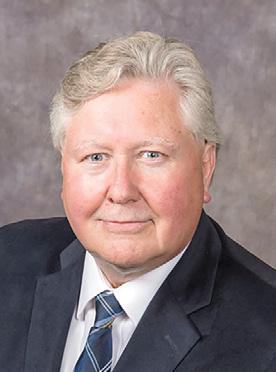
Going nuclear – are SMRs an answer to remote energy needs?
Dorothy Dobbie
At an event last year in Ottawa to celebrate women in politics, I happened to run into a group of men talking about SMRs. What is an SMR, I asked, and the answer was fascinating. SMR stands for small modular reactor, a technology being actively explored by the federal government as an answer to power needs in remote communi ties. SMRs are viewed as “green” technology because there are no emissions produced during the genera tion of power. The “ungreen” part happens before and after the plant is put into action. We will come back to that.
How does an SMR differ from a regular nuclear power plant? In size and amount of production. SMRs can produce as little as one megawatt and up to 300 megawatts of power. A 300-megawatt SMR could generate enough electricity to power approxi mately 230,000 homes a year. Because they are mod ular, SMRs can be connected in tandem to supply more or less power as needed. Such technology is not new. It has been used to power submarines and air craft carriers in the US for three quarters of a century.
The technology under study by the Canadian gov ernment employs molten salt (just to confuse you, these are called MSRs) to carry the fuel which is dis solved into liquid fluoride or chloride salts and can ef
ficiently operate at high temperatures. The beauty of this is that the salt-carrying fuel does not require third party intervention for cooling. If something fails, it drains into a reservoir and cools on its own to a solid.
One downside of the salt solution is the corrosive na ture of the salts and the technology required to deal with this. The other downside is the same as that of conventional reactors: what to do with the spent fuel.
The lifespan of a MSR is about 20 years before need ing to be replaced. It takes a long time (tens of thou sands of years) for uranium to decay.
There is an alternative. Thorium, two doors down from uranium on the periodic table, is also being used as a fuel for the reactors. Thorium, also fissionable, is abundant in nature, and it is a very efficient fuel source when used in a salt reactor, producing little radioactive waste (only about 1% of its fuel capacity is unspent in the salt system) and it is therefore safer for the environment. Additionally, thorium will break down in hundreds of years versus the long lifespan of uranium waste. Thorium is also harder to adapt for use as a weapon.
So why not use thorium instead of uranium? Up front costs. Uranium was originally developed for use as nuclear weapons, so the necessary “infrastructure” is in place. Nevertheless, countries such as India and China, which have no major investment in the cur rent uranium technology, are working to develop small reactors using thorium as a fuel.
Neither uranium or thorium, or the system for capturing energy from fission, produce atmospheric emissions. Their environmental impact occurs at min ing and plant manufacturing processes as well as in the storage of the spent radioactive waste. Currently, there are 440 nuclear reactors in production around the world and there are 50 more in production. While all the radioactive waste so far generated would fill a football field stacked seven metres (29 feet) high, stor age is still a conundrum that has not been resolved.
One reason Canada is so interested, aside from the vow to cut emissions, is that they see these SMRs as an answer to power in small northern communi ties. However, Indigenous groups are not excited, and some are worried and wonder why they are be ing “used as guinea pigs.” However, I don’t believe there is any negative motive behind the government’s quest and I would anticipate some advantages if the Northern communities become leaders in the use of the tech in cold places. What could be a deterrent is up front cost. Careful analysis needs to be undertaken to ensure that this technology does not increase the cost burden on communities.
Finally, Atomic Energy is examining the possibil ity of reopening Pinawa as a test station. Stay tuned. Meanwhile, Ontario, Saskatchewan, Alberta and New Brunswick have signed an MOU to explore the possi bilities of using SMRs. Perhaps Manitoba should get aboard.
4 whatsupwinnipeg.ca November 2022
Hon. Scott Johnson Minister’s Message
u Thank you to our Lieutenant Governor Janice Filmon
Continued from page 1
ranking officer of the province and represents His (Her) Majesty the King (Queen) in his/her jurisdic tion.
The Lieutenant Governor’s constitutional duties in clude, among others:
• Swearing in the provincial govern ment’s Executive Council (Premier and Cabinet);
• Opening each session of the provin cial legislative assembly; and
• Providing Royal Assent to provin cial bills.
The Lieutenant Governor’s ceremo nial and community functions include, among others:
• Promoting a sense of identity;
• Representing The Queen in the province;
• Acting as the province’s official host;
• Supporting social causes; and
• Recognizing outstanding citizens.
Shortly after her appointment, Mrs. Filmon com mented that she and her husband were chuckling about the role reversal. She was used to her husband as premier being introduced first and she was there as his spouse. Then the roles were reversed, and she was one receiving “top billing” with her supportive husband walking behind.
Each lieutenant governor chooses areas that they wish to support based on their own interests and causes. Janice Filmon has long been known for her philanthropy and community activism. She was past chair and member of the Board of Directors for Can

cer Care. She has been involved with so many organi zations over the years – too many to list in this article. I was happy to be involved, along with Mrs. Filmon, as a founding member of the Nellie McClung Foun dation. We started out with a dream to celebrate Nellie McClung and how she was responsible for women getting the vote for the first time in Canada in 1916. This Foundation was responsible for a historic statue being erected on the grounds of the Legislature. In addition to bringing attention to how important it was to have women considered full citizens, the Foundation also celebrates other young women with awards and scholarships for their efforts in this re gard.
Born in Winnipeg, Mrs. Filmon was raised with the belief that individual ef forts can make a powerful difference. She possesses a superior fundraising acumen, which she focuses entirely on worthy causes, most recently as chair of the Nellie McClung Foundation. Past successes include, among many others, the $26 million Foundations for Health Campaign and the $15 million Manitoba Cancer Treatment and Research Foundation campaign.
Mrs. Filmon holds a BSc (Home Economics) de gree and is past chairman of the University of Mani toba Alumni Association. As the wife of Gary Filmon, a mother of four grown children and grandmother to nine precious grandchildren and great grandchild, she is powered by a tireless commitment to people, and through this, has been driven to make significant
contributions to her community and beyond.
She has been honoured with the Guardian Angel Award by the Manitoba Cancer Treatment and Re search Foundation. As well, the Janice C. Filmon Award for Leadership in Cancer Care in Manitoba was created in her name to honour those who make significant contributions in this field.
In her tenure as Lieutenant Governor, Honourable Janice Filmon sponsored a series of free public events called “Conversations and Celebrations”, celebrating Manitoba’s Ceremonial Home. Lt. Governor Filmon embraces the role of community connector. Her vi sion for these events was to continue to find meaning ful ways to brings Manitobans together to learn and celebrate unique talents, abilities, and perspectives by embracing the rich diversity of this province and its people.
By the time this article is published, Anita Neville, will have been sworn in as Manitoba’s 26th lieutenant governor. And I’m sure Mrs. Filmon is very pleased that we will have our 3rd female LG.

I wish the Hon. Janice and Hon. Gary Filmon many more years spent in retirement. Although it’s unlikely that either one of them will be spending much time in the proverbial rocking chair, I wish to thank both for many years of public service. It is because of people like them that Manitoba continues to prosper and be known for its friendly citizens. I share with them the love for all things Manitoban and appreciate how they led the way and have been models for us all. I wish them nothing but the best and hope they will enjoy some extra time with family and friends.
Hon. Myrna Driedger is MLA for Roblin and Speaker of the Legislative Assembly.
Spider plant is an easy household plant to grow
Indomitable
might be the other name for spider plant, the intrepid and cheerful outreach plant.
So named for the spider-like plantlets the mother plant flings out, Chlorophytum comosum is one of the most popular houseplants there is. It is indifferent about light, although more indirect light will lead to more plantlets and a happier, more exuberant plant.
Give it a summer holiday in a shaded area and watch it take off next winter!
Fertilization is a luxury it seldom needs – too much of this treat can turn leaf tips brown. Water when the soil dries out. Let the water run through the pot and you have a happy plant.
There are both variegated and unvariegated varieties, although the pretty white and green leaves of the varie gated type are a cheerful sight in the middle of winter. Propagation is simple. Just snip off one of the babies, called spiderettes, and set it on top of some moist soil. It will naturally and easily take root.
Thank you, South Africa, for this gift to the plantstarved winter world.
Spider plants are listed as non-toxic to dogs and cats, although spider plants have a mild hallucinogenic ef fect on cats who can get diarrhea from ingesting the leaves. Hang a spider plant from the ceiling where it is out of reach if pets are a concern.

November 2022 whatsupwinnipeg.ca 5
Those age 65+ are eligible for high-dose flu vaccine.
xoxo
Hon. Myrna Driedger Broadway Journal
Dorothy Dobbie
The Eve of Destruction
During World War II, Joseph Stalin, Franklin Roosevelt, and Winston Churchill met regu larly to discuss war and peace. Stalin observed that England was the “odd-man-out”, Russia and the USA kept state and religion separated while England did not. Through the Doc trines of Discovery, it was religion which gave England the God-given-right to seize foreign lands from heathens in or der to build the largest empire in history. Indeed, the sun never set on the British Empire. Traditionally, religion has been regarded by the common people as true, by the wise as false, and by the rulers as useful. Historically, Stalin noted, religion has been very useful for England. Never lost for words, Churchill retorted by re minding Stalin that England’s God-giv en-right to seize lands from heathens in cluded lands belonging to atheist Russia. What about the lands belonging to secular USA, which England, a few centuries ear lier, had claimed and lost?
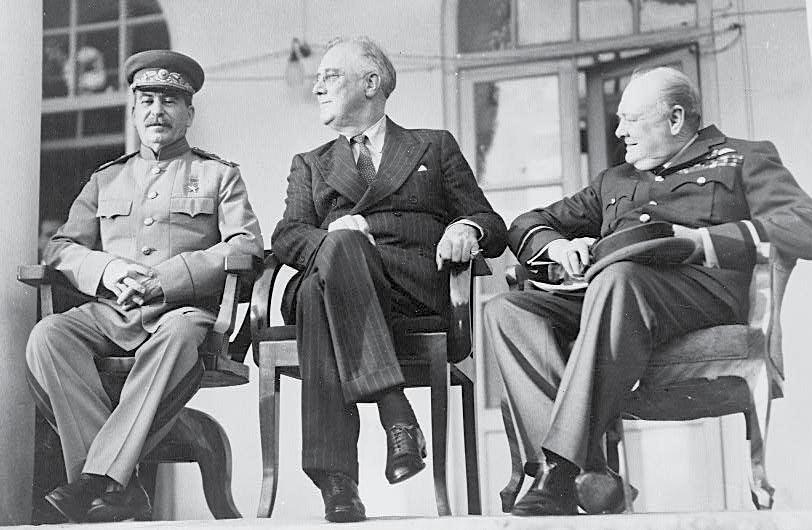
Was Churchill serious when he publicly suggested England and the USA should join forces and invade Russia? We shall never know, Roosevelt died suddenly, and Churchill was voted out of power.
The founding fathers of the USA were adamant that religion and government would never mix. John Adams mused, “This would be the best of all possible worlds, if there were no religion in it.” The newly formed USA Senate assured the world, “the Government of the Unit ed States of America is not, in any sense, founded on the Christian religion”. John Adams defended the separa tion of religion and state, affirming, the authors of the constitution, never “had any interviews with the gods, or were in any degree under the inspiration of heaven”. These founding fathers believed Man needs no divine help in forming his own doctrines and laws, and Man has the intelligence to create laws, “merely by the use of reason and the senses”.
How can there ever be peace and harmony in the world if nations continue to teach their children, there are only two forms of government, our form, and the wrong form; there are only two religions, our religion, and the wrong religion?
In 1944, the supreme court of the Unit ed States confirmed the separation of reli gion and state by ruling, “Heresy trials are foreign to our Constitution”. Seemingly benign, Congress passed a motion to give the USA an official motto, “In God We Trust”. This effectively rescinded freedom of religion by creating a new religion, Americanism. Dissenters were deemed un-American, a crime of quasi-treason, and not just heresy.
Increasing their production of war ma chines, the USA soon had more weap ons of mass destruction than the rest of the world put together. The USA joined France in Indochina where the heathens were rebelling. The Indochinese proved to be more formidable than was anticipated. Despite the USA dropping more bombs on Indochina than all the bombs dropped on Europe during World War II, and the slaughtering of “God only knows” how many millions of innocent men, women, and children, the In dochinese refused to surrender.
Worldwide, peace demonstrators were shouting “Yan kee Go Home”. American draft-dodgers were fleeing the country by the thousands. Draft cards were being burned at demonstrations where everyone was chant ing, “We have seen the enemy, and he is us.” Minori ties, demanding an end to racial discrimination, joined the demonstrations which turned into riots. Cities were looted and torched. Gordon Lightfoot’s recording, “Black Day in July” was banned. American youth were joining Barry McGuire, singing along to “Eve of De struction”. The USA was in chaos.
Everything came to a head when Life magazine pub lished pictures and stories detailing a massacre which
had happened in the village of My Lai in Vietnam on March 16, 1968. A company of American soldiers bru tally slaughtered more than 500 people, mostly woman and children. Girls and women were raped and muti lated before being killed. Even worse, eyewitnesses claimed this was not an isolated incident, the same scenario was happening throughout Indochina. The brutality of the My Lai killings and the official coverup were fueling anti-war sentiment and the division of American citizens.
The USA turned out to be much different from what Thomas Paine had imagined. He believed, in order to exist in peace and harmony with every other nation, the founding fathers should form a secular republic gov erned only by reason and common sense. John Lennon asked us to imagine such a world. If we all try to imag ine, could peace be finally given a chance?
Next month: We Become What We Think About Wayne Douglas Weedon is a Manitoba author. Some of his works may be downloaded, free of charge in various formats, at https://archive.org. Any of this author’s articles published in Lifestyles 55 magazine, may be freely copied and circulat ed in any format, if the source and author are acknowledged.
A few facts about Winchester Street
To celebrate the 100th Anniversary of St. James (starting just west of St. James Street to Sturgeon Road) breaking away from Assiniboia to form their own municipality, I am doing street profiles.
lived part of their lives on Winchester Street.
Around
1885, a small school was constructed on the southwest cor ner of what is now the Linwood School playground. The school remained in use for over 25 years before being replaced by a bigger school facing Linwood Street. The 1885 school became a bak ery and was moved to south side of Portage.
In 1912, W. James Ford was the first Winchester Street resident listed in the Henderson Directory. Be tween 1928 and 1986, the Oakdale Court at 201 Win chester was a 15-suite apart ment block. Between 1961 and 1979, Clyde Hall oper ated a bookstore at 2037 Portage Avenue featuring various types of books, and comic books. The playground on the southeast corner of Winchester and Bruce, where I enjoyed Grade One recess, is now a parking lot.
The biggest change is north of Silver. In the 1916 Henderson, the first Win chester Street residents north of Silver are listed. Subsequent Hendersons list at least 10 houses north of Silver. In 1934, there was a pole that said “Car Stop” at the northern end of Winchester (source: Retro St. James Facebook). How did that happen? In 1977, Rick King at 519 and Maureen Porteous at 527 were listed as the last Winchester Street residents north of Silver.
For more than 100 years, the words Girls and Boys have been embedded in the concrete above the Linwood School doors facing Winchester.
Let us look at some of the people who
There are many connections to edu cation on Winchester Street. John Hall served as the principal of St. James Col legiate between 1930 and 1947, when the school shared the Linwood School facility. Between 1947 and his 1950 death, Mr. Hall served as a St. James Alderman. Vic tor Glen Clark succeeded Mr. Hall.
As a young teacher, VG briefly taught at the Home Street Jon Bjarnason Acad emy, an Icelandic private school. VG administered the 1951 move into the new Portage Avenue school. By the time of his 1965 retire ment, three more additions had been added the Portage Avenue school.
After teaching at Deer Lodge Junior High, Ron Littlejohn served as princi pal of six St. James Schools.
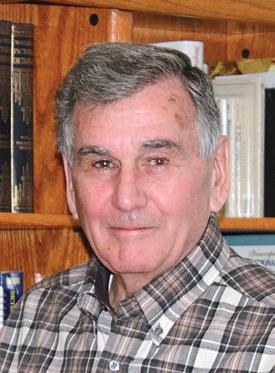


During a long career, Au drey Buxton taught at Britannia and Sil ver Heights Collegiate. I remember Au drey as substitute teacher who always did an admirable job on short notice. Linda Daniels served as the principal of Crest view, Lakewood, and Phoenix Schools.
James Aiken served as St. James school trustee between 1930 and 1935. Between 1936 and 1941, James also served as the CCF MLA for Assiniboia (which included St. James). On October 26, 2022, Holly Hunter was re-elected as St. James Assini boia school trustee.
Charles Dojack worked in the pub lishing business. Charles was involved in many community activities including the Winnipeg Press Club, a member of the national executive for the 1967 Winnipeg Pan Am Games, the Winnipeg Symphony, and the German Business Association. In 2002, Charles was awarded the Queen Elizabeth Golden Jubilee Medal.
Nelson Harvey was well known for both his job and his hobby. Nelson spent 36 years as an air traffic controller becom ing the regional director for Traffic Servic es. The Western Canada Aviation Muse um awarded Nelson a Pioneer of Aviation award. During his spare time, Nelson was a photographer. Nelson’s photographs can be seen in the newspaper archives and on social media.
Basil Hall was a long-time employee of Cowin Steel. In a project that took 22 years, Basil built a replica of a Canadian Vedette Boat Plane.
Percy Downton managed Winnipeg Enterprises between 1960 and 1979. In 1963, Percy arranged for the New York Rangers to hold their training camp at the Winnipeg Arena. In 1967, Larry Ranson was named the recreation director for St. James. His responsibilities included man aging the brand-new St. James Civic Cen tre.
In 1971/72, Noel Buxton (1910-1978) was the president of the Manitoba Curling Association. Noel is in both the Manitoba and Canadian Curling Halls of Fame. (1)
Stuart Chandler spent 65 years as an independent textile manufacturers’ agent. Stuart was an Honorary Life Member of the Rotary Club. In 1993, Stuart was awarded the Canada 125 Medal.
Beryl Chandler was a Life Member of the Assiniboine Golf Club. On June 24, 1972, Beryl and Virginia Wilson, her Winchester Street neighbour, witnessed the horrific Linwood Street Plane crash that claimed nine lives.
The 1949 St. James Horticultural Awards included William and Anne Stocker for their vegetable garden, and John and May Hutton for their lawn (page 3, Winnipeg Free Press August 8, 1949). As a teenager, May Hutton had been the first cashier at the Kings Theatre (Retro St. James Facebook Page). The 1960 St. James Horticultural Awards in cluded another prize for the Stocker’s veg etable garden, and a prize for William and
Grace Turner’s lawn (Winnipeg Free Press August 8, 1960, page 5).
Hope Pilgrim founded the Pilgrim project which collected clothes, furniture, and household goods for needy families at Christmas time Margaret and Bert Bent ley were long members of the Manitoba Classic and Antique Automobile Club.
There are many longevity stories among Winchester Street residents. Joseph and Gladys Petrie lived on Winchester for over half of a century. Joseph worked for 47 years at the Merchant Consolidated Ware house. During his retirement years, he served on the Board of McKenzie Seeds.
Arthur Cann worked for 35 years at Ea ton’s. Leslie Fox worked for 46 years at CPR. After 31 years, Mike Ruta recently retired as a Fire Department Captain.
During my 2002 political campaign, I got to know Darryl and Cindy Gledhill. We were dealing with the issue of in creased Winchester Street traffic due to the new eastern extension of Silver Av enue into the Polo Park Shopping Center.
At a 1970 political convention., I at tended a political convention which fea tured a determined 19-year-old challeng ing for the provincial party’s presidency.
The 19-year went to a career of more than 30 years as one of the best elected politicians. Bill Blaikie remained very ap proachable. He answered every email and letter that I sent him. In recent times, Bill was a Lifestyles 55 columnist. RIP Bill. (2)
This is the 43rd story in my street-bystreet St. James History. The series has now mentioned over 1,000 St. James residents.
Notes:
1. Noel Buxton’s father and his son are also named Noel Buxton, therefore I used his birth and death dates.
2. Bill was running for the Presidency of the Manitoba’s PC’s. He was defeated by Graeme Haigh.
Fred Morris is a Grandfather, Sports Fan and Political Activist.
6 whatsupwinnipeg.ca November 2022
Conference of President Franklin D. Roosevelt, Marshall Josef Stalin and Prime Minister Winston Churchill, November 28 to December 1, 1943. Image courtesy of the US Library of Congress.
Fred’s St. James name-dropping reaches the 1,000 mark!
Fred Morris From the desk of a gadfly
Wayne Weedon Food for Thought
We remember
Continued from page 1
forces, German representatives signed an agreement with the Entente Pow ers. The provisions of that armistice implied for the immediate cessation of hostilities, the exchange of prisoners of war, the destruction of German sub marines and the with drawal of its army within the borders of Germany. This ended the fighting in the First World War, the biggest and cruelest conflict the world had seen until then. For mally, the war ended al most a year later, on the fifth anniversary of the Sarajevo assassination, with the signing of the Versailles Peace Treaty between Germany and Entente.
Vimy Ridge War Memorial. The Park is such a common sight just outside downtown that Winnipeggers may have forgotten its significance.
battles were mostly fought in Europe.
• Skin grafting surgery was invented during the First World War.
Through Time
The surroundings in which the French Armies fought in Alsace. Soldiers at a campfire.
Right in the center of Winnipeg, there is a Vimy Ridge Memorial Park, a place to honour Canada’s military and veterans. War memorials commemorate the 44th Canadian Infantry battalion, the Royal Winnipeg Dragoons and the Royal Winnipeg Rifles. Also, there is a monument to Pilot Officer Andrew Charles Mynarski, a Winnipeg born war hero. The bronze statue was dedicated at Vimy Ridge Memorial Park on June 12, 2015. A.C.M. became the last air man to receive the Victoria Cross in the Second World War for his bravery while in action.
Whoever comes to this place feels deep respect for all those who gave their lives in the Great War. The monument of the 44th Canadian battalion was originally erected on Vimy Ridge, France, by the 44th battalion in 1917. In 1924 it was moved to its present location at Vimy Ridge Park. There are plaques on the sides of this monument that list those who lost their lives during the battle of Vimy Ridge.
During the Great War, letters were the main method of communication between soldiers and their loved ones. Those letters are a wonderful source of information about everyday life in wartime, and historians still research them. Mil lions of letters were sent to the battlefield and the same number were re turned to the homeland. Sometimes, letters from the front point to a com pletely different idea of war. Almost every soldier sent letters and postcards, and families, their moth ers, fathers, wives and sisters responded. Each photo is a story and each one has its name. And while we look at them, our heart beats faster. There, we see soldiers hiding in trench es, sitting in the woods, resting or anx iously looking into the distance and we can’t help but wonder what they were thinking, feeling at that moment. Were they thinking about their loved ones at home or when the war will end. They often try to escape from reality by play ing music, singing and dancing, writing love songs, and songs about bravery that were vital to morale.
Some of the most beautiful songs are written on the battlefield. One of those is the most famous war memorial poem “In Flanders Fields” by Lieutenant-Col onel John McCrae, Canadian artist and soldier during World War l.
Did you already know…
• The German troops were the first to use flamethrowers in this conflict, and they threw the flame at a distance of 40 meters.
• Wars were fought on every ocean and on almost every continent, but fierce
• Dogs were used as couriers who car ried orders to the front lines in capsules attached to their bodies.
• There were over 35 million civilian and military casualties in the First World War. Over 15 million died, while 20 mil lion people were wounded.
Human history is a history of wars. There is a record of over 14,000 wars, big and small, in which over 3 billion people died. Wars were occasionally in terrupted so that new weapons could be invented or to clean up the old ones. Let’s hope and pray that we will not be contemporaries of a new bloody world war.
*“Wait for me, and I will surely come” love poem by Konstantin Simonov, writ ten on battlefield.
Vimy Ridge War Memorial. The Park is such a common sight just outside down town that Winnipeggers may have forgot ten its significance.
Place of Remembrance Day pilgrimage Brookside Cemetery Field of Honour
Sanja’s sense of those times would be mag nified here at Brookside Cemetery Field of Honour. Winnipeg’s war dead, marked by row on row of white crosses, speak loudly through their silence.
“Brookside Cemetery Field of Honour is one of the largest and oldest Military interment sites in Canada. Considered Canada’s most significantly designed Military Field of Hon our, Brookside has more than 10,000 Vet erans, Service Members and War Heroes interred alongside each other, with all inter ments marked by the Military Grey Barrie granite upright monument, mounted on a beam.
“The Field of Honour opened in 1915 when The Daughters of the Empire, a charitable organization now known as Imperial Order Daughters of the Empire (IODE), requested the City set aside a section of the cemetery for the interment of Veterans returning from World War I.
“The Brookside Field of Honour is home to the only Commonwealth War Graves Com mission Stone of Remembrance in Canada and many other important military monu ments.”
It is located at 3001 Note Dame Avenue next to Red River College. The cemetery in total holds more than 200,000 graves. From the Internet – Ed.

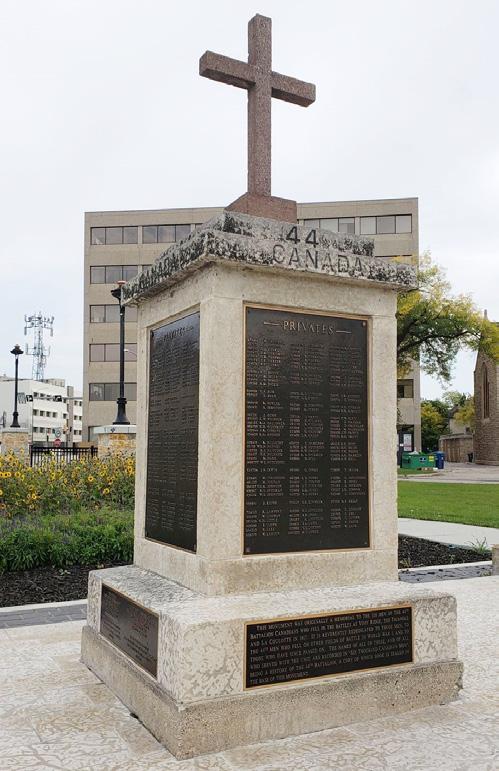
Veteran journalist, Myron Love, publishes first book on Amazon
Inmy nearly 45 years as a journalist, I have rarely been one to make my writing all about me. Rather, I en joy telling other people’s stories. However, this is a heartwarming story which actually very much includes myself.
For my most recent birthday in August, my daughters, Avra and Ele na, surprised me with a very special present. Usu ally, I receive chocolate and gift certificates to Chapters – which I always appreciate. This year, the present from my daugh ters was the draft copy of my first book which they arranged to publish on Amazon.
First, the prologue. Last spring, my daughter, Avra, published her first book of short stories on Amazon. Over the past few months, I have been her unof ficial marketing agent. I am happy to report that, thanks to family and many friends – as well as a few complete strangers, we have been able to sell well over 100 books.
That got me to thinking out loud about possibly also publishing my first book on Amazon – but I dismissed the idea. After all, I finished the book over 30 years ago and none of the individuals that I wrote about are still living.
So now, I am finally a published author and beginning to promote the book.
I actually began working on The Wrong Time and The Wrong Place: Ca
nadian Airmen Land in Buchenwald, more than 40 years ago, shortly after I began my career as a journalist.
The gist of the book is the true story of 24 Ca nadian airmen, part of a larger group of 168 Allied flyers, who experienced first-hand the horrors of the Nazi concentration camp called Buchenwald.
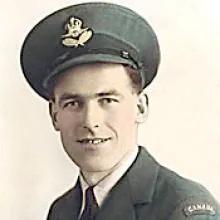
The trajectory for all of them began with their being shot down over France shortly before or after D-Day, rescue by the French Resistance, be trayal to the Germans and imprisonment in Fresnes prison just outside of Paris. Just before the Allies liberated the French capital, the Nazis emptied out Fresnes, transferring all the prisoners in sealed boxcars to Buchenwald.
After two months in Buchenwald, the POWs were moved to a regular POW camp.
I first became aware of this story again early in my writing career when I was introduced to Harold Bastable. Harold was a devoted member of the Royal Canadian Legion ( he was a member of the St. James branch) and he was also friendly with several of the guys who belonged to the largely Jewish General Monash branch of the Legion. Through my Monash friends, I learned about Harold’s experience in Buchenwald. So, I interviewed Harold for the Free Press (for which I was freelancing at the
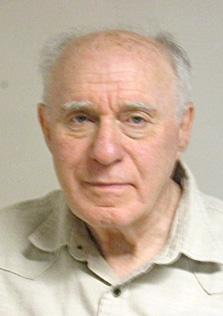
time). He told me about the other air men – he had the names of all of them –and that they were planning a reunion in Victoria. I immediately saw the oppor tunity for a book about the Holocaust from a different perspective. I (perhaps naively) believed that non-Jewish wit nesses to the horrors might sway some of these Holocaust deniers (who were largely right-wing extremists at that time).
I paid my own way to that reunion in Victoria at the Empress Hotel, where I met and interviewed many of the Bu chenwald group who were still alive. (Several had already passed away.) I in terviewed by phone those I had missed at the reunion.
Then I began writing their story.
It took me several years to write the book. This was a time before computers. I was working with an electronic type writer with one page of memory.
As well, I couldn’t afford to take off a block of time from my day job as a journalist to work on a book which was not likely to provide much finan cial benefit. I have interviewed enough authors over the years to know that generally you are not going to get rich from writing a book.
I was also getting busier as a journal ist as the number of magazines I was contributing to continued to grow.

I did apply early on, unsuccessfully, for a Canada Council grant. I thought it might be helpful for me to actually visit Fresnes prison and Buchenwald.
By 1989 or 1990, I had finished the book and was ready to try finding a publisher. I figured that being a success ful journalist, I would have no problem getting the book published.
I figured wrong.
I received a number of rejections from publishers noting that they only published one or two books a year –and good luck. One publisher’s com ment about the book was “too long for an article, too short for a book”.

A couple of publishers offered to publish if I came up with $5,000 to wards publishing costs. I didn’t have the money at that time, nor did I think I should have to pay for publishing.
So, there it sat. Until now.
“The Wrong Time and the Wrong Place” is available on Amazon for $10 for the E-book version, $15 for the soft cover copy and $25US for hardcover. Or in terested readers can contact me at myjo love1@gmail.com or 204 334-4961 about buying a copy.
November 2022 whatsupwinnipeg.ca 7 u
Sanja Rossi Manitoba
Harold Bastable.
Myron Love
The Brookside Cemetery.
In Remembrance
In Flanders Fields
In Flanders fields the poppies blow Between the crosses, row on row, That mark our place; and in the sky
The larks, still bravely singing, fly Scarce heard amid the guns below. We are the Dead. Short days ago We lived, felt dawn, saw sunset glow, Loved, and were loved, and now we lie In Flanders fields.
Take up our quarrel with the foe: To you from failing hands we throw The torch; be yours to hold it high.
If ye break faith with us who die We shall not sleep, though poppies grow In Flanders fields.
- John McCrae
Lest we Forget
Photo of the month
Lisa Lewis captured this image of two bears having a con fab behind a veil of pampas grass from inside the gallery looking out at the Sculpture Garden in Assiniboine Park.
Lisa Lewis is a lifelong Winnipeg resident. Selfemployed with her business consulting firm Beyond Ex cellence, she is fortunate to also be able to find the time for her outside interests. These include photography and music. Lisa enjoys tak ing pictures of the interest ing and often overlooked details of our beautiful city and its buildings and archi tecture. This past year, Lisa had the pleasure of helping edit and doing some pro motional work for author and historian John Einarson on his recent publication Heart of Gold: A History of Winnipeg Music.


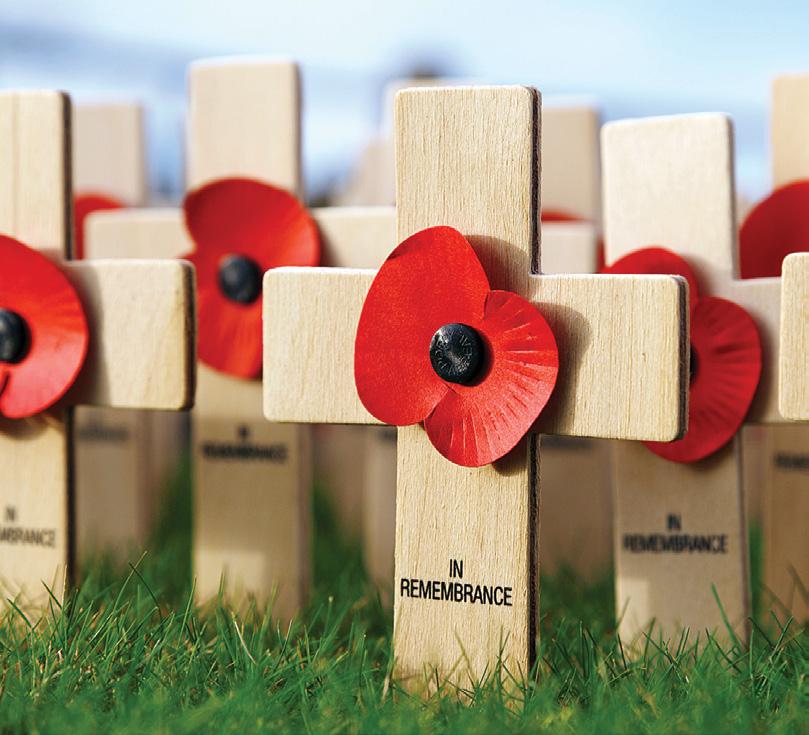
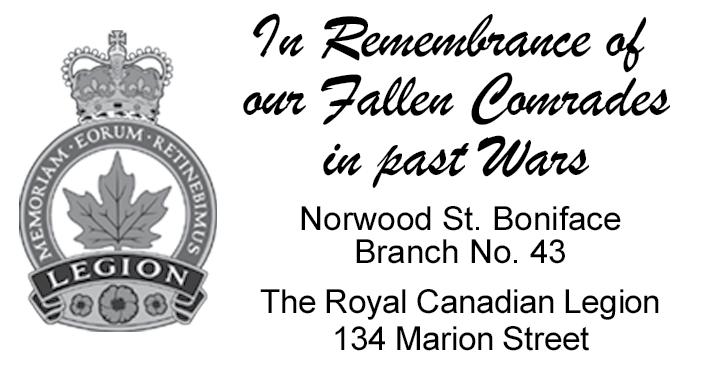

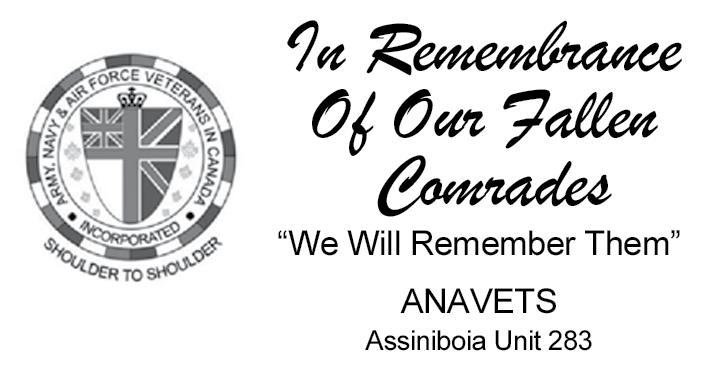
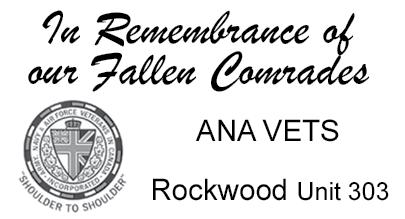
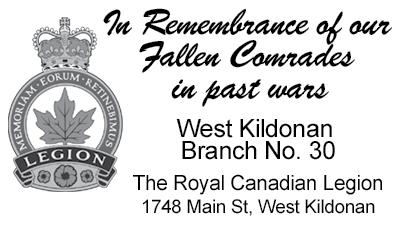
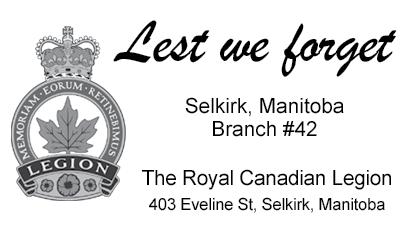

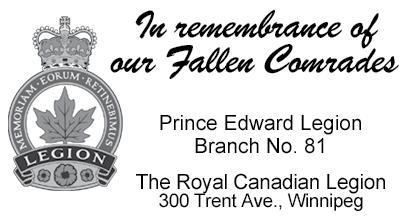


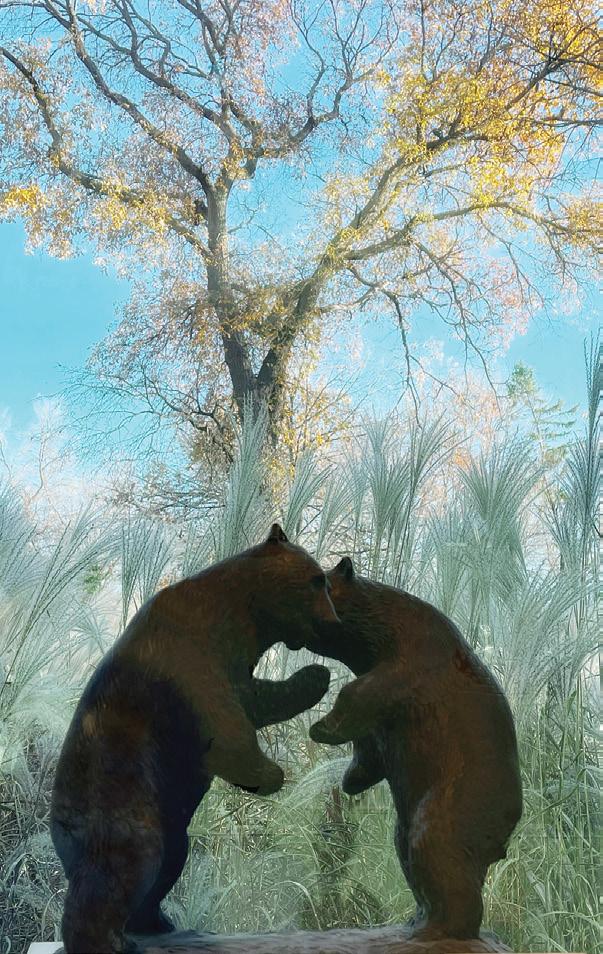
8 whatsupwinnipeg.ca November 2022
Henderson Highway Legion Branch No. 215 The Royal Canadian Legion 215 Maxwell King Dr. East St. Paul, MB
JOHN ORLIKOW CITY COUNCILLOR RIVER HEIGHTS/FORT GARRY WARD orlikow.ca follow me:510 Main Street, Winnipeg, MB R3B 1B9 (204) 986-5236 | jorlikow@orlikow.ca Praising what is lost makes the remembrance dear. William Shakespeare “ “
“Getting it done!” – starting with infrastructure
Dorothy Dobbie
“Manitoba has an infra structure deficit,” said Premier Heather Stefanson as we opened the conversation this month on roads and transportation. She says that the key to all eco nomic development and opportunity relies on a solid network of access to good roads.
“We have set aside $1.5 billion – $500,000 million a year over the next three years – to deal with this,” she said, “and we are rolling out our plan strategically. Safety is paramount, so priority one is starting the work
where it is most needed and around rural communities that would other wise be isolated.”
But the long-term focus is on trade and commerce. “If we want to attract investment, then busi ness needs good roads to get their products to market,” she said. That includes farmers trying to move grain and local manufacturers striving to get Manitoba manu factured goods such machinery to market, not to mention the food products so critical to the world right now.
Heather Stefanson The Premier’s priorities
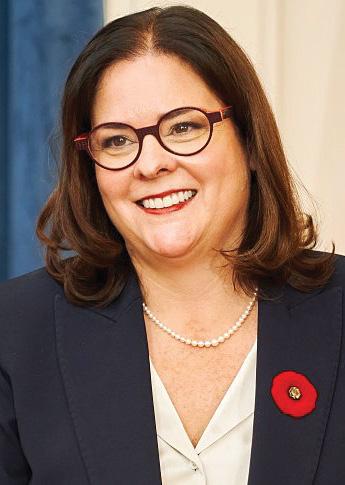
“All this,” she says, “will improve oppor tunities for Manitoba businesses and help keep Canada functioning.”
Case in point is the twinning of the final 17 km piece of the heavily used
TransCanada Highway. This is the last remaining two-lane, undivided section of the trans-Canada highway in Mani toba between Falcon Lake and the On tario border. Initial planning work is now underway to complete this longawaited section on the only major east west link from Ontario to Saskatch ewan. By twinning this last portion of the Trans Canada in Manitoba, Can ada’s national trade corridor and the efficiency of our national supply chain will be significantly enhanced.
The province is also constructing passing lanes on critical highways and new highways are getting paved shoul ders.
Another example is the recent an nouncement at CentrePort, where she and Transportation Minister Doyle Pi wniuk announced a $40 million grant to the Port to allow them to complete their much-needed water and sewer infrastructure on the city side of the campus. She got fed up with waiting
for the Feds to chip in their $20 mil lion in the three-party agreement. “We have to start getting things done,” she said. “So, we are putting up the cash and sending a bill to the Feds for their part.” This is urgent, because there is tremendous interest in CentrePort from outside and the services are criti cal to continued investment.
All this is part of the premier’s highlevel thinking on how to make Manito ba prosper again. She mentioned that Minister of Agriculture Derek Johnson attended the 31st annual Tri-National Agricultural Accord recently to discuss mutual trade issues. He then went to Mexico City to meet with buyers of Canadian Ag products. It is all part of the strategy to open our province up for business in every sector. Transpor tation is key to this goal.
“I am very pleased with our Trans portation Minister, Doyle Piwniuk,” the premier added, noting, “He really knows his stuff!”
Transportation Minister Doyle Piwniuk paving the way to the future
Dorothy Dobbie
DoylePiwniuk does know his stuff. My pen could barely keep up with his list of highways that are underway or planned, all recited in the correct order and punctuated with the communities they connect. He has picked up the Premier’s vision and trans lated it into a well-integrated plan to “get it done”.
One Million Perimeter Freeway Initiative
He starts with the plan to replace lights with interchanges along critical routes on the Perimeter Highway. Called the One Million Perimeter Freeway Ini tiative, it is preparing to meet the needs of a city whose population will soon reach that milestone. This is critical to the safety of all Manitobans coming to and from the city. It also facilitates Trans Canada trade and commerce, moving goods from the east to the west and vice versa. The work has already begun on the south side of the city from Portage Avenue on the west to Fermor (which is part of the TransCanada #1 inner city route) on the east.
Construction of the interchange at St. Mary’s Road started this spring with completion slated for November of 2024. Next on the list is the very busy Perimeter and McGillivray crossroads which gives access to Highway 3 lead ing to the heart of southern Manitoba and towns such as Morden and Winkler and Highway 2 West that joins up with the north-south Highway 10. These in terchanges will be connected to service roads to lead traffic away from multiple and dangerous local entries on to the Pe rimeter.
Currently a study on the requirements for the North Perimeter is underway. They have been looking at closing un controlled access roads onto the Perim eter – some 22 of them when the study was begun. Currently the priorities are focused on Pipeline Road and Links with Route 90 and highway interchanges to connect with CentrePort. This is all part of a longer-term plan to upgrade our Perimeter and prepare for a burgeon ing population as well as the economic growth being driven by the Premier’s long-term goals.
Trade and Commerce Grid Initiative
At the same time, Doyle has been looking strategically at the north-south, east-west requirements of the highway system throughout the province. Driv ing his decisions are the conditions of the roads, the frequency of traffic and the commercial connections to move farm and other products to processors, eleva
To be upgraded to RTAC
North: PR 283

Southern Manitoba West: PTH 1A (Por tage la Prairie), PTH 3 , PTH 5, PTH 21 (US Border–PTH 16), PTH 23 (PTH 18–PTH 5), PTH 34 (US Border–PTH 3, PTH 1–PTH 16), PTH 83, PR 244 (PTH 3–PTH 23), PR 305 (PTH 2–PTH 1), PR 256 (PR 255–PTH 1).
Central Manitoba East: PR 229 (PTH 8–PTH 9), PR 231 (PTH 8–PTH 9).
South East Manitoba: PTH 12 (PTH 44–PTH 59), PTH 23 (PTH 75–PTH 59), PTH 30 (US Border–PR 201), PTH 44 (PTH 12–PTH 11), PTH 59 (US Border–PTH 52), PR 201 (PR 200–PTH 59), PR 205 (PTH 75–PR 246), PR 211, PR 227, PR 246 (PR 205–PTH 23).
Capital Region: PTH 9A (E Jct Manitoba Ave (Selkirk)–N Jct PTH 9), PTH 12 (PTH 1–PTH 44), PTH 67 (PR 236–PTH 9), PR 311 (PTH 59–PTH 12)).

tors, and ultimate markets. The goal is to provide a streamlined commercial grid capable of handling heavy duty traffic, including double truck trailers and heavy farm equipment. This means a more du rable surface which is being deployed on all the key highways.
“We are working with municipalities to build roads to a higher international standard,” said the minister. “And it is not only Winnipeg that needs modern interchanges.” His department is cur rently reconstructing a damaged inter change at Portage La Prairie, but they are also looking at Brandon where, regu lated by lights, the TransCanada cruises through the edge of town, stopping and starting at several key crossroads. “The TransCanada Highway through Mani toba is one of the busiest roads in the re gion on both sides of the border,” noted Doyle. “We have to respond to that.”
The high-level view of this work is to expand the network of trade and com merce routes built to support RTAC
loading – RTAC being the transporta tion lingo for a national standard for highway truck weights and RTAC being Manitoba’s heaviest regulated loading classification.

This RTAC grid proposes to fulfil the promise of Manitoba’s central position on the North American continent, mak ing us the hub for trade and commerce and the movement of goods in all direc tions. The current grid already meeting the RTAC standards covers 5, 989 km. It is being expanded by 1,123 km of up grades to 7,112 km, on a long list of pro vincial roads. The road numbers rattle off Doyle’s tongue like rapid-fire bullets. (See sidebar).
In central Manitoba, a driving factor for roads development is the need to connect farm producers with Portage la Prairie as its status as an agricultural pro cessing centre continues to grow.
Work is also continuing to provide smooth access to the US border with number 75 being the most travelled route. Upgrades are also planned for Highway 59 to the border at Tolstoi.
The north
Under Premier Stefanson, there has been increasing emphasis on the oppor tunities in the north. Upgrades to High way 6 are continuing, creating more passing lanes so that this already RTAC standard road can be made safer for both trucks and cars. In addition to the work
on the north-south routes, upgrades are planned northern east-west routes such as 283 between The Pas and the Sas katchewan border where it meets Sas katchewan Highway 9, a critical route for forestry and agriculture movement.
The government also stands ready to work with mining companies in helping to ensure there are the roads needed to carry minerals to processing. “We need to be partners with the federal govern ment and First Nations in building roads up north,” said the minister. “We want to empower our First Nations and to work in partnership with them and the mining companies to help them build a local economy.”
The Premier and the Minister also both see the need to help connect isolat ed First Nations communities with good transportation, whether by air, land, ice road or ferry. They are looking forward to co-operating with the federal govern ment to expedite these plans and identify priorities. The federal government is re sponsible for roads on reserves to con nect communities with the wider world.
All this is just the beginning. There is a great deal of work to be done over the next three years to meet the $1.5 billion commitment to the transportation sec tor, said Minister Doyle Piwniuk. “Our economy is growing and we need to be ready to meet all the transportation chal lenges and opportunities,” he said.
November 2022 whatsupwinnipeg.ca 9
With all the Thanksgiving parties last month, my thoughts turned to temps passe. What we did as a Sunday ritual.
Memories, memories, memories. When I was younger, we always had a roasted meal, lunch truly was a feast. A weekly treat that I believed everyone had, it always was so heavenly. Times change, we live our lives very differently nowadays. Honestly, I don’t even know when I last had a Sunday roast.
Remembering how walking in the house af ter playing with friends outside – yes, you read right we played out side, I was always so happy to catch that first aroma of a glorious roast, a feast ready to be devoured by the family. The fight to get as much of the pork crackling was always fun, it was so loved by all.
The veggies were a bountiful feast unto themselves. Cauliflower with cheese sauce, Brussels sprouts, ruta baga and carrot, beans from haricot to runner (French) and the best roast potatoes ever. All these vegetables came straight from the garden. It was like a vegetable stall, there were so many choices. Thinking back, we had fresh vegetables all year long, the climate in Jersey was very different, of course. Happy memories, none theless.
Here is what you will need:





1 four-rib pork roast
4 tablespoons white vinegar

2 ½ tablespoons freshly chopped thyme
2 ½ tablespoons freshly chopped
of Pork’

rosemary

4 tablespoons extra virgin olive oil
1 ½ tablespoons baking powder













1 ½ litres water

2 tablespoons regular sugar
Salt and pepper to taste
Directions: Getting the pork to really crackle is simple. Place the pork on a baking sheet, then us ing a very sharp knife score criss-cross over the skin, being careful to not cut too deep into the meat itself, just the fat.
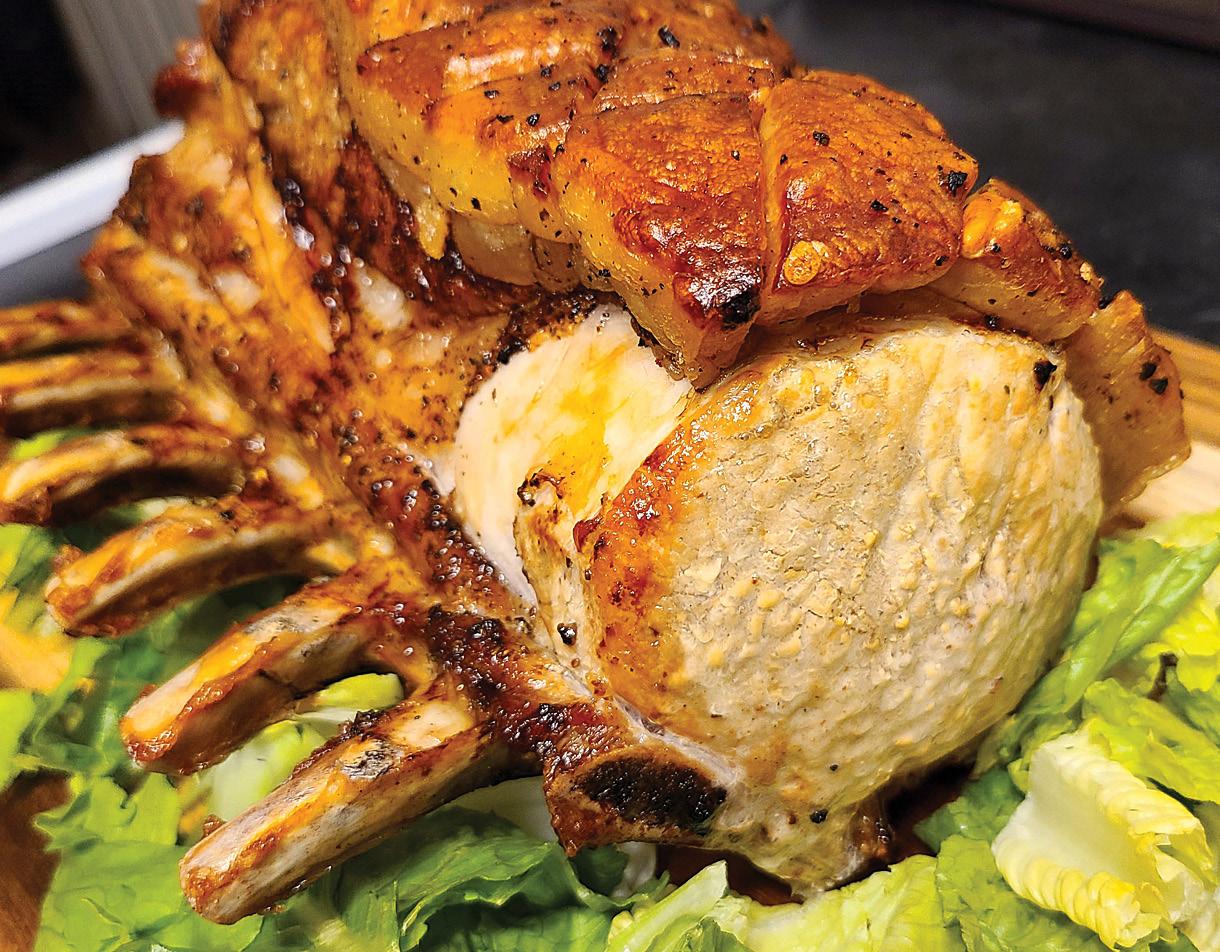
Preheat the oven to 325°C. Slower cook ing results with a more juicy and tender meat. Pour the vinegar, sugar and water into a large pot and bring to a boil. Add the baking pow der and bring to a boil once again. Carefully pour the hot liquid over the scored piece of pork, you don’t need to keep the liquid once poured. Use some paper towels dry the meat down. Massage the extra virgin ol ive oil onto the skin then the thyme, rosemary salt and pepper.
Place the pork in a roasting pan and put in the oven. Roast for about two hours until cooked. The internal tem perature should be 145°C. Remove from the oven, wrap with foil, and leave to rest for 15 minutes before carving and serving. (Leaving the foil to rest will further increase the temp inside the meat.
There should be plenty of crackling to go around. When serving I always have fresh apple sauce to complement the pork along with vegetables and, of course, roast potatoes. Yummy.
Ian Leatt is general manager of Pega sus Publications and a trained chef.

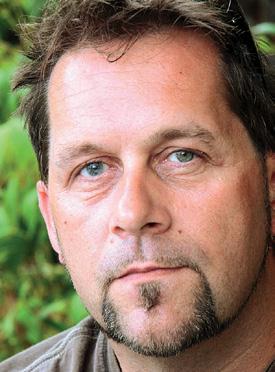
10 whatsupwinnipeg.ca November 2022
A hearty, home-roasted ‘Rack
A home-roasted ‘Rack of Pork’ is truly a feast!
Ian Leatt Foodies
50th AnniversAry seAson Presented by november 12, 15, 18 Lighthearted Music & Sheer Fun! Love at first sight, mistaken identities, and of course, lots of laughs. this version of Cinderella is a heart-warming tale of the triumph of kindness over envy. set in the 1950s with colorful high-fashion costumes and a mid-century modern vibe. Celebrate the Return of Live Opera with Two Stylish Comedies @ManitobaOpera SEE BOTH SHOWS FOR JUST $57! FOR MORE INFO/TICKETS mbopera.ca x 204-944-8824 APriL 22, 25, 28 (THE SCHOOL FOR LOvERS) A Canuck Così! mozart’s comic masterpiece about budding romance unfolds in the 1930s at an elegant, but rustic, resort hotel in the majestic Canadian wilderness. A wonderfully foolish story about the silliness of young love. PERFORMANCES AT THE CENTENNIAL CONCERT HALL YOUTH TICKETS JUST $19 All performances, all sections (Ages 17 and under) SENIORS ANd STUdENTS dISCOUNTS ALSO AvAILABLE
November is Fall Prevention month
November is Fall Prevention month; we all have a role to play in preventing falls! People 65 and older are at increased risk for falls, this will continue to rise due population aging. In Winnipeg, Manitoba falls are a leading cause of hospitalization due to injury. The average hospital stay is 25.4 days and a leading cause of death (About Falls | Staying On Your Feet –Taking Steps to Prevent Falls | Winnipeg Re gional Health Author ity, 2020). The impact of a fall includes nega tive mental health issues such as an increased fear of falling and a decline in physical health. A fall that causes injury to an older person may result in difficulties in activities of daily living and an increased risk of early death.
SafetyAid: Falls Prevention Program

A & O’s SafetyAid: Falls Prevention Program, is the first of its kind in Canada! This is a specialized program that works with older people to proactively prevent falls in their homes and community.

SafetyAid is an evidence-based community fall pre vention program for older Winnipeggers 65 years of age and older. The program assesses and provides


interventions regarding fall risk to older adults. The purpose of the SafetyAid program is to prevent falls and provide older people with a greater sense of safe ty in their home, which will allow older adults to in crease their independence and engage in meaningful activities. The SafetyAid: Falls Prevention Program is made up of the following components: • Fall risk assessment (fall clinic)
• Exercise program (24-weeks)
• Education (with the exercise program)
• Home assessment
To learn more about the SafetyAid: Falls Prevention Program or any of the agency’s other innovative programs and services please contact A & O at 204-956-6440 or visit www.aosupportservices.ca
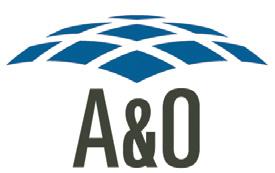
Supporting older adults in aging well since 1957

November 2022 whatsupwinnipeg.ca 11
A & O: Support Services for Older Adults Scott Johnston MLA for Assiniboia assiniboiamla@outlook.com 204.615.6044 Heather Stefanson MLA for Tuxedo tuxconst@mymts.net 204.487.0013 LEST WE FORGET Connect with us online at whatsupwinnipeg.ca
Manitoba Association of Senior Communities
nnn Winnipeg
20 Fort Street Seniors Club 2200-20 Fort Street / 204-250-8644
A & O Support Services for Older Adults Inc. 200-207 Donald Street 204-956-6440 / Toll Free: 1-888-333-3121 info@aosupportservices.ca www.aosupportservices.ca

Archwood 55 Plus 565 Guilbault Avenue / 204-416-1067 archwood55mail@gmail.com archwood55plus.wildapricot.org
Bleak House Centre 1637 Main Street / 204-338-4723 bleakhousecentre@gmail.com www.bleakhousecentre.com
Broadway Seniors Resource Centre 823 Ellice Avenue / 204-772-3533 www.bsrc.ca
Brooklands Active Living Centre 1960 William Avenue W. / 204-632-8367 bpscc@mymts.net

Centro Caboto Centre (Italian Seniors) 1055 Wilkes Avenue W. / 204-487-4597 ext. 30 info@cabotocentre.com / www.cabotocentre.com
Charleswood Senior Centre 5006 Roblin Boulevard / 204-897-5263 info@charleswoodseniorcentre.org www.charleswoodseniorcentre.org
Creative Retirement MB 204-481-5030 info@creativeretirement.ca www.creativeretirementmanitoba.ca
Crescent Fort Rouge United Church 55+ 525 Wardlaw Avenue / 204-489-1925 www.crescentfortrouge.ca
Dakota Community Centre 1188 Dakota Street / 204-254-1010 ext. 217 melissal@dakotacc.com / www.dakotacc.com
Dufferin Senior Citizens Inc. 377 Dufferin Avenue / 204-986-2608
Elmwood East Kildonan Active Living Centre 180 Poplar Avenue / 204-669-0750 poplarseniors@live.com / www.eekactiv.com
Fort Garry Seniors Resource Council 200-270 Donald Street / 204-792-1913 fortgarry@aosupportservices.ca www.aosupportservices.ca/resources/seniorsresource-finders/
Good Neighbours Active Living Centre 720 Henderson Highway / 204-669-1710 admin@gnalc.ca / www.gnalc.ca
Gwen Secter Creative Living Centre 1588 Main Street / 204-339-1701 becky@gwensecter.com / www.gwensecter.com
Headingley Senior Services 5353 Portage Avenue / 204-889-3132 ext. 3 hdlyseniorservices@mymts.net www.headingleyseniorservices.ca
Indigenous Senior Resource Centre Inc. A1 – 100 Robinson Street / 204-586-4595 executivedirector@isrcwpg.ca / www.asrcwpg.org
Manitoba Korean 55+ Centre 900-150 River Avenue / 204-996-7003 www.ksam.ca
North Centennial Seniors Association of Winnipeg Inc. 86 Sinclair Street / 204-582-0066 ncsc@shaw.ca / www.ncseniors.ca
North Point Douglas Senior Centre 244 Jarvis Avenue
Pembina Active Living (55+) 170 Fleetwood Road / 204-946-0839 office@pal55plus.com / www.pal55plus.ca
Rady Jewish Community Centre 123 Doncaster Street / 204-477-7539 lmarjovsky@radyjcc.com / www.radyjcc.com
Rainbow Resource Centre 170 Scott St. / 204-474-0212 ext. 211 OTR@rainbowresourcecentre.org www.rainbowresourcecentre.org
The Salvation Army Barbara Mitchell Family Resource Centre 51 Morrow Avenue / 204-946-9153 sheila.keys@salvationarmy.ca
South Winnipeg Seniors Resource Council 117-1 Morley Avenue / 204-478-6169 resources@swsrc.ca / www.swsrc.ca
Southdale Seniors 254 Lakewood Boulevard / 204-253-4599 www.southdale.ca
Sri Lankan Seniors Manitoba 113 Stan Bailie Drive / 204-888-8253 www.srilankanseniorsmb.ca
St. James-Assiniboia 55+ Centre 3-203 Duffield Street / 204-257-8850 info@stjamescentre.com / www.stjamescentre.com
St. Mary’s Rd. Seniors 613 St. Mary’s Road / 204-257-0678 www.stmarysroad.ca
Transcona Council for Seniors 845 Regent Avenue / 204-222-9879 tcs@mymts.net / www.transconaseniors.ca
Transcona Retired Citizens Org. 328 Whittier Avenue W. / 204-222-8473 trco328@shaw.ca
Vital Seniors 3 St. Vital Road / 204-253-0555 stmary@mymts.net / www.stmarymagdelenewpg.org
Winnipeg Chinese Senior Association 204-291-7798 / wcsa.wpg@hotmail.com www.winnipegchineseseniors.ca
Beyond Winnipeg Beausejour
Beau-head Senior Centre 645 Park Avenue / 204-268-2444 beauhead@mymts.net
Brandon Brandon Seniors for Seniors Co-op 311 Park Avenue E. / 204-571-2052 executivedir.sfors@wcgwave.ca / www.brandons4s.ca
Carman
Carman Active Living Centre 47 Ed Belfour Drive / 204-745-2356 www.activelivingcentrecarman.ca

CranBerry portage Jubilee Recreation of Cranberry Portage Legion Hall 217 2nd Avenue / 204-472-3031
Crystal City
Crystal City & District Friendship Club Inc. 117 Broadway Street / 431-867-0122
dauphin
Dauphin Active Living Centre Inc. 55 1st Avenue SE / 204-638-6485 www.dauphinseniors.com
eriCkson
Comfort Drop In Centre 31 Main Street / 204-636-7895 areas@mymts.net
Flin Flon
Flin Flon Seniors 2 North Avenue / 204-687-7301
gilBert plains
Gilbert Plains and District Community Resource Council Inc. PO Box 567 / 204-548-4131 / gpdcrc@mymts.net www.gpdcrc-newhorizons.wix.com/gpdcrc
gimli
Gimli New Horizons 55 Plus 17 North Colonization Road / 204-642-7909 gimli55@mts.net / www.gimlinewhorizons.com
grand marais
Grand Marais & District Seniors 36058 PTH 12 gmdseniors@gmail.com / www.gmdseniors.ca
grandview
Grandview Seniors Drop In 432 Main Street / 204-546-2272
hamiota
Hamiota 55+ Centre & Restore Community Co-op Inc. 44 Maple Avenue / 204-764-2658
killarney
Killarney Service for Seniors 203 South Railway / 204-523-7115 seniorservice@killarney.ca
manitou
Pembina Community Resource Council 315 Main Street / 204-242-2241 pembinacrc@gmail.com
minnedosa
Minnedosa Senior Citizens Assoc. 31 Main Street S. / 204-867-1956 mdsasca@gmail.com
morden
Morden Activity Centre 306 N. Railway Street / 204-822-3555 mordenactivitycentre@gmail.com www.mordenseniors.ca
neepawa
Neepawa Drop In Centre 310 Davidson Street / 204-476-5103 www.neepawa.ca/district-drop-in-center
pilot mound
Pilot Mound Fellowship Club 203 Broadway Avenue / 204-825-2436
plumas
Plumas Senior Citizens Club Inc. 102 White Street / 204-386-2029
portage la prairie
Herman Prior Senior Services Centre 40 Royal Road N. / 204-857-6951 hermanpriorcentre@gmail.com www.hermanprior.com
Portage Service for Seniors 40A Royal Road N. / 204-239-6312 https://portageservicefors.wixsite.com/psfs
riverton
Riverton Seniors Activity Centre 12 Main Street / 204-378-2800 rdfc@mymts.net / www.rivertonfc.com
sandy lake
Municipality of Harrison Park - Age Friendly Initiative Committee 204-585-5310
Sandy Lake Drop In Centre 100 Main Street / 204-585-2411
selkirk Gordon Howard Centre 384 Eveline Street / 204-785-2092 executivedirector@gordonhoward.ca www.gordonhoward.ca
snow lake
Snow Lake Seniors Centre 71 Balsam Street / 204-358-2151 snowsrs@mymts.net
steinBaCh
Pat Porter Active Living Centre 10 Chrysler Gate / 204-320-4600 ed@patporteralc.com / www.patporteralc.com
stonewall
South Interlake 55 Plus 374 1st Street W. - Oddfellows Hall 204-467-2582 / si55plus@mymts.net www.si55plus.org
swan river
Swan River & District Community Resource Council 126 6th Avenue N. / 204-734-5707 resourcecouncil@srseniorservices.com
the pas
The Pas Golden Agers 324 Ross Avenue / 204-623-3663 djdlake@mymts.net
thompson
Thompson Seniors Community Resource Council Inc. 4 Nelson Road / 204-677-0987 thompsonseniors55@gmail.com
treherne
Treherne Friendship Centre 190 Broadway Street / 204-723-2559 jstate1066@gmail.com
viCtoria BeaCh
East Beaches Social Scene 3 Ateah Road / 204-756-6468 ebssinc1@gmail.com / www.ebseniorscene.ca
East Beaches Resource Centre Traverse Bay / 204-756-6471 ebresourcec@mymts.net www.ebresourcec.weebly.com
winkler
Winkler & District Multipurpose Senior Centre 102-650 South Railway Avenue / 204-325-8964 office@winklerseniorcentre.com www.winklerseniorcentre.com
nnn
www.manitobaseniorcommunities.ca info@manitobaseniorcommunities.ca

12 whatsupwinnipeg.ca November 2022
Stay Active, Stay Connected Get Connected - Join a Centre Join the conversation with Lifestyles 55 online! whatsupwinnipeg.ca Facebook: Lifestyles55 Twitter: @Lifestyles55
Flu shots are a lifesaver for seniors
How to be safe health wise in the coming winter months should be on the minds of all older adults. We have all learned about the actions we can take in dividually because of the pandemic but I would like to add one more to our arsenal: DON’T PRO CRASTINATE – VACCI NATE! First and foremost is the annual flu shot. There is good news for all adults 50 years of age and older! Vaccinations are not just for kids! As we age our bodies lose some of the capacity for immu nity to some of the vac cinations we received as children and there are now vaccinations not only for flu that can save deadly results to older adults but provide protection against: SHINGLES, PNEUMONIA, AND WHOOPING COUGH which are also dangerous for older adults so now the slogan: GET UP TO DATE – VACCI NATE.
Peggy Prendergast Exploring Lifestyle 55 Possibilities


During the pandemic we seemed to have experienced a lower incidence of flu outbreaks, but according to sources we expect a severe season of influenza this coming winter. Can we protect ourselves? Yes, there is the high-dose flu shot for adults 65 and older. I became aware of the high-dose flu shot in 2017. I was so impressed with the information about my diminishing im mune system that I pur chased the shot for $85 and have had one each year that it was available. Just as eyesight and hear ing can diminish with age, science has discovered so does our immune system. Although the flu itself can really make us sick, what it does for chronic illnesses, such as diabetes or heart problems, can be deadly! Most of us have those conditions under control but when hit with the flu, if we haven’t the added protection of the flu shot, the flu will make those chronic conditions

End of a wonderful journey
Senaka Samarasinghe
flair up and cause irreparable damage or death. Because we can protect our selves from this year forward at no cost. I urge you to make an appointment with your pharmacist and get the high dose flu shot!

I have a personal example. At the beginning of December in 2017, I fell and broke my hip. Earlier in Septem ber, as I stated earlier, I had been intro duced to the benefits of the high dose flu shot and, as I have a couple of the chronic illness mentioned, I decided to pay the cost of the shot and protect myself. After the partial replacement of my hip in December, because of the fall, I was offered rehab following the surgery. The ward I was transferred to when I was ready, contained 10 rooms and thus 20 patients. Part of my rehab therapy was to walk the circle these rooms made to regain my mobility so I could go home. All the patients in the other rooms were coughing and really sick with the flu, including the other person in my room, a couple of them so sick they were moved to the hallway for constant observation. When I asked what they were suffering from, one of
the staff told me I was the only patient out of the 20 that didn’t have the flu. To this day I truly believe that high dose flu shot saved my life!
“DON’T WAIT – VACCCINATE.”
While visiting the pharmacist, in quire about and make an appointment for any of the following vaccinations you may need to get: SHINGLES, PNEUMOCOCCAL, & WHOOP ING COUGH.
Please check out a new website I just found: MANITOBA ASSOCIATION OF SENIOR COMMUNITIES. It is the provincial focal point to facilitate communication, networking and plan ning among seventy provincial senior communities and raise their profile.






“Senior communities are health pro moting, capacity building and commu nity focal points on aging where older persons come together for services and activities that enhance their dignity, sup port their independence and encourage their involvement in and with the com munity.” We will talk much more about their philosophy and work in evolving the lifestyles of those of us 55 years and older and all retirees in the future.
Chanaka’s
father Somasiri Wijew ardena (Some Aiya/Sam) was known to me as a bachelor. He lived next to my university batchmate and my roommate Deepal Jayasun dara’s parental home in Kalagedihena facing the Colombo-Kandy main road. I can still remember Sam’s parents, as well. Deepal became my brother-in-law. Sam got married to Sheela and, in the early 1970s, they had two sons named Chanaka and Samiranath (Sam Jr.) Both of them used to creep across the small opening of barbed wire fence to play with my nieces, Nipuni and Yashika. In the 1970s, Sam, Sheela and two sons mi grated to Canada.
Sam and Sheela invited Chandani and me for Chanaka’s wedding in the Taj Samudra Hotel, Galle Face, Colombo and I attended his wedding as well.
Subsequently, my sister Thilaka and her family also migrated to Winnipeg and lived close to Sam’s family in St. James. During our short visit, Chanaka arranged Lao Monks for my sister Thila ka’s Buddhist activities (Pirith and Dha na) to be conducted at home. Thilaka always talks very highly about Chanaka and the way that he helped to settle them with her family in Winnipeg.
In August 2003, my sister and her family arranged me a visit to Winni peg. Chanaka accompanied me to sev eral places such as Lao Buddhist Temple, Hutterite colony in Elie and few other locations. I can still remember that the Chief Monk in Lao Temple told me that he is going to ordain Chanaka as a Bud dhist Monk in his Temple. That showed me that his closeness with Buddhist ac tivities. Chanaka accompanied me to see his daughter, Nilusha and son Thoshan, who lived on Ross Avenue. At that time Thoshan was only one year old.
During my tenure as President, Sri Lankan Association of Manitoba (SLAM), in Sept 2016, I invited Nilu sha to represent youth on the Board of Directors, SLAM. With the participa tion of youth in May 20th 2017 Nilusha arranged Paint Night at the restaurant named Charisma of India. For this event Chanaka helped her a lot. She served as a board member until 2021. During this period Chanaka provided immense sup port to Nilusha. She completed her de gree in U of Manitoba. In the same uni versity currently, she is following a MSc degree as a Physician’s Assistant. His
son Thoshan is at Western University in London, Ontario. Chanaka was happy as both of his children are doing well in their studies. He mentioned that his next ambition is to open the dance floor with Nilusha during her wedding day.

When Chandani and I came to settle in Winnipeg, Chanaka was a family friend of us and all our family members. Chanaka looked after his son and daugh ter not only as a loving father but also as a close friend. When we visited Sheela Akka and Some Aiya, Chanaka talks to us by keeping his head on his mother’s lap as a small child. As a respect he al ways tried to talk to me in Sinhala. He treated me not only as an elder but also his parents long standing friend. As a re sult, he associated me as a close friend of his own age. This shows that he main tained diverse characteristic. He main tained an unusual behavioral pattern not only with me but also with all. I am therefore unable to fathom him as an or dinary human being.
Chanaka, your pattern of life will defi nitely help to shorten the long journey in Samsara. Chanaka, may you attain su preme bliss of Nirvana!
November 2022 whatsupwinnipeg.ca 13 Thomson “In The Park” Funeral Home & Cemetery 1291 McGillivray Blvd | Winnipeg, MB 204-925-1120 A division of Service Corporation International (Canada) ULC The Dignity Memorial Benefit Program Take Advantage Of Important Member Savings Today • 10% savings on funeral and cremation products and services1 • 10% savings on cemetery interment rights, products and services2 • National transferability on prearranged services within our network3 • Access to the Compassion Helpline for counselling4 • Personal Planning Guide to document personal wishes Personalized Funeral, Cremation and Cemetery Services www.thomsoninthepark.com Getting Started Is Easy! The Dignity Memorial network is North America’s most trusted name for funeral, cremation and cemetery services, serving families at more than 1,900 locations. Eligible extended family includes spouse or domestic partner, children (natural, adopted or stepchildren), parents, grandparents and great-grandparents of both the member and their spouse or domestic partner > Lock in today’s prices > Provide peace of mind to yourself and your family > Plan your final arrangements in 4 simple steps. visit CARP.DignityMemorial.com 1. 10% savings does not apply to cash-advance items. On already discounted Dignity Memorial plans, employee/member is entitled to the greater of two discounts. 2. Benefit only offered in provinces with Dignity affiliated cemeteries. On already discounted Dignity Memorial plans, employeed/mem ber is entitled to the greater of two discounts. 3. Certain restrictions apply. 4. 13 months of counseling is available after services are provided by any Dignity Memorial provider throughout North America. Services provided by Charles Nechtem Associates. Inc. The Dignity Memorial network and CARP are owned and operated by non-affiliated entities. Dignity Memorial locations and offerings vary by province.
Somasiri Wijewardena.
If you or someone you know has Alzheimer’s disease or another dementia, visit alzheimer.mb.ca or call 204-943-6622 for help. You are not alone. We are here to help.
Why more Canadians are leaving a gift to charity in their Wills
We are lucky. Supporters of the RWB are thoughtful individuals, who want the arts and culture to continue to thrive and enrich the lives of everyone in the community. Our support ers, and the RWB, are committed to building a better future.

Often, people think about contributing to the causes they care about with monthly donations or volunteer ing time, but there is a growing number of people who are going one step further to leave a gift to char ity in their wills. These are ordinary Canadians who have realized they can make a powerful contribution that will last for generations to come, without taking away from the resources they, or their families need.
This new mindset among Canadians of all ages has been triggered, to some extent, by the intensity of re cent global events and the realization it is possible to do more just by giving in a different way.
You may be surprised to learn that as small a dona tion of 1% of your estate can result in a bigger con tribution than you ever thought possible. You are still leaving 99% of your estate to support your loved ones, and you’re not using any of the money you need now.
The best part about leaving a gift in your will is how very simple a process it is. Here are a few sug gestions to help you take the next steps and the link to the Will Power website to find out more https://www. willpower.ca/:
1. Calculate your donation. With a simple cal culation, you can determine how much you want to leave to charity, and how much you want your loved ones to receive. You can make that calculation using the Legacy Calculator tool developed by Will Power, a national public education campaign designed to in
spire Canadians to think differently about charitable giving.
2. Discover the tax benefits. The Canadian gov ernment has created tax incentives to encourage more Canadians to give to charity, benefits extended to gifts from your estate. As an example, the article on the Will Power website features a couple and their work with a financial advisor “to give big” to charity and take advantage of tax benefits, all while leaving a size able inheritance for their daughters.
3. Ask a financial advisor. Consulting a financial
expert will help you maximize your donation and en sure it works in your favour. You can use Will Power’s Financial Advisor Finder to find an expert in your re gion. There is also a handy guide available to start the conversation with your advisor.
4. Discover how to keep the love going. Learn how a gift in your will supports the RWB in our work to teach, create and perform exceptional dance. Or you can contact Jennifer McWilliams, Donor Rela tions Officer at 204.957.3442 or email jmcwilliams@ rwb.org to find out more.

Living in Manitoba we all recog nize that the furnace is one of the most important pieces of home equipment to have operational. Let’s be honest, without it you would probably freeze. If you are like most homeowners, you are not familiar with the furnace, I am here to say you should be. Make yourself aware, it can and will save you money in the long run.
Having lived and sur vived for 20 months in the time of COVID-19, air circulation, quality of air, control of heat distribution throughout your home all revolves around regular mainte nance practices for your HVAC equipment. It is important to remember that regular maintenance increases the life of your equipment.
Failure to properly maintain your furnace could lead to gas leaks and other dangerous issues, such as carbon monoxide poisoning, now nobody wants that! Therefore, regular mainte nance of your furnace is a good idea. Here are some tips to keep things run ning smoothly knowing your home is safe and warm throughout the upcom ing colder months.
• A visual inspection. The first step in maintaining your furnace is to look at your equipment, giving it a thor ough look over. Upon review, there

should be no damage, all pipes and tubes should be sealed and attached securely. If there is an aroma of rotten eggs, you will have a potential gas leak, call the professional.
• Check the air filter. The air filter plays an integral role within your furnace. To start, it captures small airborne particles which helps prevent illnesses and allergens. As the fil ter accumulates dirt and grime its ability to clean the air reduces, making your furnace work hard er in circulating the air. This can lead to higher energy costs and less consistent air tempera tures throughout home. Air filters are easy and inexpensive to change. A rule of thumb is:
1. For 1- to 2-inch filters, replace them every 1 to 3 months.
2. For 3- to 4-inch filters, replace them every 6 to 9 months.
3. For 5- to 6-inch filters, replace them every 9 to 12 months
• Check the control valve. All fur naces feature a control valve for safety reasons. If you find that your furnace is not producing heat, this is one of the first places to check. On a gas furnace, the control valve should be located on the supply line. When checking ensure that this valve is in the “on” position and that gas is free to enter your fur nace.
• Check the thermostat is function ing properly. If your thermostat is not functioning properly, your furnace will not be as efficient as it should be. Dirt and grime can lead to a re-calibration. To ensure proper calibration of your thermostat, contact a technician and have them analyze your HVAC sys tem.
• Check and clean all vents. All household vents should be checked regularly for debris and blockages. Blocked ventilation could cause carbon monoxide poisoning, which as we all know can be fatal.
• Check and clean your furnace regularly. A dirty furnace will not pro duce heat as efficiently as a clean one, and the dirtier a furnace gets, the more
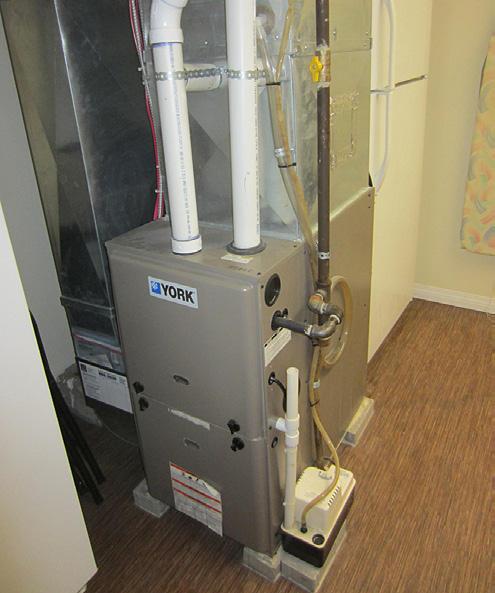
chance there is for things to go wrong. Be sure to keep your furnace clean and maintained to keep both your energy and heating costs down. Start with the filter system, blower, and motor.
• Check and test your Carbon Mon oxide Detector. If you have a gas fur nace you must have a carbon monox ide detector nearby. Your tester must be tested every 6 months as you do with your smoke detectors.
• Check exhaust pipes are clear. A high-efficiency gas furnace will have exhaust pipes that lead to the outside of your home. These two pipes need to be always kept clear.
• Check the surround of your fur nace. A very useful tip is to always clean the surround of the furnace. Clean and dust the surface of the furnace, vacu uming dirt and debris build up.
• Spring shut down. Once winter has passed and the warmer weather has arrived gas furnaces need to be shut down. Leading to a great time to clean the furnace, replace the air filter in preparation for the nest season.
Following these guidelines at the be ginning of each season will help you maintain an efficient and reliable fur nace. Ultimately if you are unsure of what to do or how to go about it con tact your HVAC provider and let the professional complete the task for you.
Brent Poole is the owner operator of Handy Hands Construction, which he has run with his father Jim since 1997. A carpenter by trade, Brent enjoys all types of projects. “We’re not happy until you are happy!”

14 whatsupwinnipeg.ca November 2022
RWB Company Artists. Photo by David Cooper.
The heart of your home in the Winter, your furnace, it too needs TLC Be sure your furnace is running smoothly before the winter weather comes!
Who was that masked man?
Fluseason is upon us. We haven’t heard much about “influenza” for the past two or three years. Evi dently, it’s because we, or most of us, have been taking all (or most) of the suggested pre cautions against the dreaded contagious disease COVID-19. Even though we are given the impression that all is good and it’s safe to go outside again and mingle among the masses inside big box stores or sporting events, it’s still here and not going away anytime soon.
When was the last time you or some one you know caught a cold? After the restrictions eased people starting dump ing their masks and exposing their faces. That’s when that darned “summer cold” reappeared. Strange how that happened isn’t it?
I recently attended a close-to-capacity show at the Canada Life Centre. It holds more than 16,000 people. I roughly estimated less than 10% of the attendees wore masks. That was the first ma jor event I have attended in three-plus years. I wore a mask and almost felt conspicuous for doing so. I won dered if people looked at me and thought, “Check him out, he must be sick or something.” I admit it was nice to get out and get a sense of humanity once again but I’m in no big hurry to attend another big gathering any time soon.
I think we all understand why some of the COVID-19 restrictions have been lifted or at the very least lightened
up. Money. Plain and simple it all comes down to money. If we are reminded every day in all media how serious COVID-19 is with people being hospitalized, many in ICU and of course the continuing num ber of people who die, people will live in fear. They will choose, if they can, to work from home. If you work from home, you don’t have to shop as much for workrelated clothing, suits, dress shoes, going out for lunch or a coffee.
The number of fundraising events sup porting most every charity in one way or another dropped to zero until some of them sought out other means of making money. Although some of the galas and balls have returned, I am told there are nowhere near the number of supporters they were used to three years ago. A lot of people are still hesitant to join the masses out and about.
When folks stayed at home more often, they drove their vehicles less thus spending less on gasoline and maintenance. We didn’t go out to restaurants anywhere near as often which hurt the hospitality business in a huge way. I have no idea how many eateries closed up for good or cut their hours of operation in half just to make a go of it. You have noticed I’m sure that most everything is back to normal. It’s almost rare now to see someone wearing a mask. The only place we still see them in great numbers are as litter on the streets and sidewalks of the city.
COVID-19 is still very much alive and doing very well
in this beleaguered berg of ours. On the day of this writ ing (mid-October) the test positivity rate increased to 24.1 from 23.4 the previous week and almost 300 peo ple were confirmed positive. Seventy-three Manitobans were hospitalized this week and 14 of them required ICU care. Recently COVID-19 Resources Canada reported one in 22 Manitobans get infected. We have the greatest number of cases in the country. An estimated 10,000 are catching it every day.
We have had more than 151,000 cases of it in the prov ince and more than 2,200 people have died from the vi rus. In total, so far, 4.4 million Canadians have had it and about 46 thousand have died. The numbers aren’t going down and the pandemic is not going away. Still, our government tells us that because of vaccination we are at limited risk.
I have had four shots including the recent bivalent. I had it at the same time as the flu shot. I have had more needles in my arms over the past three years than I think I have ever had, save the yearly flu shots, and I don’t care. They have all been available and free.
And so, I am going to continue wearing one of my growing collection of masks when I’m out and about as long as this thing lasts. I have a feeling this “thing” is go ing to last a long time. I suggest everyone get the vaccine and wear a mask. However, not unlike the government, it’s just a suggestion.
Jim was a writer-broadcaster, producer and presenter on television and radio for 40 years. He is also a host on Lifestyles 55 Digital Radio. Find Radio Redux and Mid-Century Memories it at www.whatsupwinnipeg.ca
Geocaching is a great way to be active
Ihope that some of you had a chance to try out Geocaching after reading the article in the last issue. The geo caches at Cabela’s were actually put there for training sessions that took place on the grounds. Feel free, though, to try to find a geocache anywhere that may be closer to your residence.
Another month has come and gone, the leaves have changed co lour and relocated to the ground making some geocaches a bit harder to find. Some geocaches are either on the ground or under something on the ground. Not a problem, the geocache is still there. The weather right now is not too harsh and the insect life has, for the most part, gone away for the winter.
Gary Brown Geocaching
geocache page. There are several types of attributes, such as whether or not you may need special equipment. This at tribute may be for a TOTT (tool of the trade) and may include anything from tweezers to a ladder. An at tribute can also include pos sible hazards along the way or unique conditions one should be aware of. They can also include whether the cache is wheelchair acces sible, dog friendly, requires a flashlight and more. My favourite is winter friendly. This will tell you whether it is on or close to the ground (not winter friendly) or up higher than your knees. Here are a few tips on geocaching.
close use your eyes, hands and your geo senses to locate the geocache.
Look for something that seems out of place. Geocaches come in all sizes, shapes and colours. Look under rocks, in tree hollows, under park benches and yes, look in that one spot that you are 100% positive is not the hiding place. Chances are, that’s exactly where the geocache is.
Geocaches are not only hidden, they are quite often disguised as bird houses, rocks, bricks or other everyday objects. If they are in or around foliage they may be covered in camouflage tape. So, think outside the box.
still finds a lot of the geocaches before I do.
One last tip, always bring a pen or pencil to sign the log.
The Manitoba Geocaching Associa tion (MBGA) will be conducting Basic Geocaching courses at Fort Whyte over the course of the winter. The next one is on the afternoon of November 20. Please check the Fort Whyte Alive calen dar on line if you are interested (https:// www.fortwhyte.org/event/introductionto-geocaching/2022-11-05/).
This is probably a good time to discuss something called attributes. For anyone just starting out these are important as they provide valuable information on the individual cache. They are icons located on the upper right hand side of the online
A good place to pay atten tion to is the difficulty level and the terrain level on the geocache page. A basic membership will give you only the geocaches that are easier but start out with the lower numbers in this scale.
A smartphone or a GPS receiver will get you between three and six meters from the geocache. When you are this
Check the hint. Many cache pages of fer hints that may help you figure out where to look. Also check the latest ac tivity. Recent logs from other Geocach ers may contain valuable information such as “I had to look really LOW to find this cache”.

Look high, look low, look around. Geocaches are never buried. Always respect your surroundings. NEVER trample on flower beds, climb walls, or damage property in any way to find a geocache.
Be patient with yourself, developing geo senses takes time. My wife devel oped her geo sense well before me and
“Something to sing about”
Oscar Brand was born in Winni peg to a Jewish family who lived on Lusted Avenue just down the street from Norquay School. After first moving to Minneapolis 1927, then living in Chicago for a while, the family moved to New York City where he finished high school. He eventually graduated from Brooklyn College.
He found his calling in the world of folk music and the legacy he left is nothing short of legend. During his 70-year career he composed more than 300 songs and re leased close to 100 albums. Many of the songs he wrote were of patriotic nature, none of them more recognizable in this country than Something to Sing About (This Land is Ours).
Brand was the founder of the Newport Folk Festival as well as a curator of the Songwriters Hall of Fame. His radio program Folksong Festival which began in December, 1945, was broadcast each week on
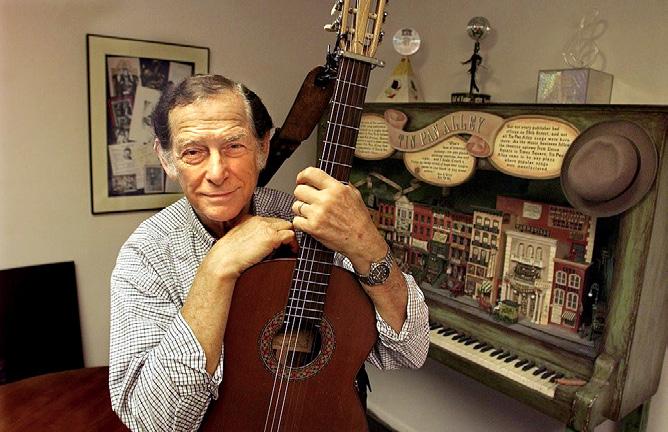
NPR radio’s WNYC for 71 years and holds the distinc tion of Brand being the longest running radio show with the same host, according to the Guinness Book of World Records. The show introduced talents such as Bob Dylan, Woody Guthrie and eventually Woody’s son, Arlo, The Kings ton Trio, The Weavers and Peter, Paul and Mary were also welcomed.
Although he appeared on television in the late 1950s, his TV career really took off when he became the host of Let’s Sing Out on the CTV network from 1963 to 1966. The show then moved to the CBC for the final two years of the program. The show with Brand’s backing helped launch the careers of the likes of Gordon Light foot and Joni Mitchell.
As a board member of the Children’s Television Workshop he helped create the popular children’s television program Sesame Street. Some have suggested, due to his occasional disagreements with board members, the character of Oscar the Grouch was named after him.
Oscar Brand was the recipient of an Emmy Award as
Geocaches are located literally every where. There is one at the bottom of the Marianna Trench in the Pacific Ocean (GC95P88) as well as one left on the International Space Station (GC1BE91) in 2010 and now, two years ago, one at tached to the Mars Perseverance Rover (TB5EFXK). Around 80,000 people have had the opportunity to log that one. In future articles we will discuss how you too can add that one to your collection.
Next month though, we will discuss geocaching in the winter.
Gary Brown is the vice president of the Manitoba Geocaching Association (MBGA) and can be reached at MBGAex ec@outlook.com.

well as the Peabody Award for Broadcast Excellence in 1982 and was awarded the Lifetime Achievement Pea body Award in 1995. It only seems appropriate that Brand has been called “The Dean of American Folk Music”.
On September 30, 2016, Oscar Brand succumbed to pneumonia just a week after recording his last radio pro gram. He is survived by his wife of 46 years, four children and nine grandchildren. He died at his home in Great Neck, New York. He was 96.
Jim Ingebrigtsen is a council member of the Manitoba His torical Society and submits the stories of Memorable Manito bans each month to Lifestyles 55.


November 2022 whatsupwinnipeg.ca 15
Oscar Brand: Folk Singer, songwriter, author and radio host. (1920 - 2016)
Jim Ingebrigtsen Is It Just Me...
Memorable Manitobans
u Understanding diabetes: The real ‘cure’ for almost all diseases
sulin’s most important functions are to lower blood glu cose levels after we eat, and transfer that glucose from the blood to our cells where it’s used for energy. When we eat too much and too often, the extra glucose results in fat storage, causing weight gain.
Insulin Resistance
When we digest carbohydrates, glu cose (blood sugar) levels rise. The pan creas secretes the hormone insulin, which moves the blood glucose into our cells for energy. The overconsumption of car bohydrates (including sugar, honey, high fructose corn syrup, etc.) and processed foods, eating too often, snacking be tween meals, chronic stress, insufficient sleep, and other dietary and lifestyle fac tors cause the pancreas to produce more and more insulin. This attempt to stabi lize blood glucose levels results in our cells becoming less sensitive (resistant) to the effects of insulin. Our pancreas is forced to make more insulin to lower the extra blood glucose, but the cells no longer respond properly. This vicious cycle, called “insulin resistance,” can lead to type 2 diabetes if not corrected.
A major problem is that during this stage, fasting glucose levels may be perfectly normal, but your in sulin levels can be higher (hyperinsulinemia). During a physical examination, insulin levels are not usually measured. Most physicians base their diagnosis on fast ing glucose levels, a glucose tolerance test, or postpran dial glucose level (measured two hours after a meal). Because these numbers are often in the normal range when people are insulin resistant, the issue may not be diagnosed accurately. The problem exists, but many doctors underestimate the seriousness of this issue. You want to detect insulin resistance early enough to correct the problem.
Insulin Resistance > Prediabetes >
Type 2 Diabetes
I cannot over-emphasize the importance of getting insulin resistance under control. If the necessary chang es to your diet and lifestyle aren’t made, insulin resis tance can progress to prediabetes, and then to type 2
diabetes. With prediabetes, insulin levels are unstable and abnormal, but glucose levels have not progressed to the point of type 2 diabetes. The time window for this progression can vary depending on the individual’s diet, lifestyle, genetics, and environmental factors, but it’s much easier to reverse or correct insulin resistance and prediabetes than type 2 diabetes.
Type 2 diabetes has quadrupled in the last 30 years and is the most common cause of kidney disease. But type 2 diabet ics have a tremendously increased risk of other conditions including blindness, am putation, chronic infection, stroke, nerve damage, heart disease, and cancer. When you are insulin resistant, all the same com plications that are associated with type 2 diabetes have already started to develop at the intracellular level due to the high insu lin levels.
In addition, insulin resistance causes weight gain and obesity. About 40% of the adults on the planet are considered obese or over weight, almost half of men over 45 have low testos terone levels, and close to 10% of women experience menstrual irregularities or infertility.
I have to emphasize again that insulin resistance increases the risk of just about every health problem, including heart disease, high blood pressure, high cho lesterol, heart failure, stroke, and cancer (colorectal, prostate, breast, and more). High blood sugar can lead to chronic infections, blindness, hearing loss, nerve damage, amputations, premature aging, inflammation, and a host of gastrointestinal problems including heart burn and GERD. Insulin resistance and elevated blood glucose contribute to kidney disease, vertigo, osteo porosis, liver disease, metabolic syndrome, dementia (including Alzheimer’s disease), skin conditions, osteo arthritis, gout, PCOS (polycystic ovary syndrome), mi graines, Parkinson’s disease, chronic fatigue syndrome, fibromyalgia, and erectile dysfunction.
While there are many factors that cause and contrib ute to these diseases, it’s now understood that insulin resistance is one of the major triggers. You can improve
One is the loveliest number

I have the number one job in the world. Seriously. All day, I get to meet with incredible kids and families who are experiencing challenges that none of us would wish on anyone. In ad dition to their health challenges, they selflessly take the time to share their stories and raise funds to support other families who are going through similar situations.
Then there are the health care profes sionals and researchers we work with. These folks – our healthcare heroes –spend their days healing, caring, listening, learn ing and so much more so that all kids get the very best care possible. If you have been following the news, you will know that they are working under demanding and less-thanoptimal conditions. We try hard to support them however we can so they can keep putting kids first.
And finally I have the privilege to meet with people like you, who decide you have a personal responsibility to make sure kids, families, health care professionals and research teams have what they need so that our entire community benefits from a collective commitment to kids’ wellbeing.
What’s interesting is that everyone – business owners, individuals, service groups, schools, sports teams – has a story that inspires them to the support child health.
Let me give you an example. We got a call from an organization we had not worked with before, Tor
nado Haulers, who wanted to make a donation. We met with them and learned the reason for their donation. The owner and his wife had just given birth to their first child, a healthy, hap py girl they named Heaven. They were so filled with gratitude and joy that they wanted to say thanks with a gift of $11,111.11.
That's a unique number, which has deep meaning to them. In their cul ture, the number one is an auspicious number that signals the beginning of everything. This gift honours the beginnings of Heaven’s life and their new, larger family unit. We are incredibly grate ful for their generosity and wish them continued health and happiness.
Heaven’s family chose to direct their gift to support research at Chil dren’s Hospital Research Institute of Manitoba (CHRIM), which is also fitting, as there are many number ones there too!

The teams at CHRIM are made up of world-leading researchers. Not only best in Manitoba or best in Canada. Best everywhere. They are at the fore front of dynamic, meaningful work that is relevant to kids here at home and around the world. Research that moves quickly from the lab to the bedside.
For example, type 2 diabetes (T2D) in a child was first identified by Dr. Heather Dean, a clinician-scientist at HSC Children’s and CHRIM. Until that time, T2D had been believed to be an adult condition. Since then, Dr.
so many serious health conditions by making the di etary and lifestyle changes necessary to improve insulin sensitivity and lower insulin levels.
You may be wondering how to self-test if you are insulin resistant. To determine your risk, answer the following questions:
• Do you have PCOS (Polycystic ovary syndrome if you’re a woman) or erectile dysfunction (for men)?
• Does a member of your family have type 2 diabe tes or insulin resistance?
• Do you easily retain water?
• Is there a family history of heart disease?
• Do you have hypertension (high blood pressure)?
• Cravings for sweets and salty foods (women)?
• Tingling sensations in the hands or feet?
• Is there more than normal fat around your belly?
• Do you have skin tags (little bumps of skin at your neck or armpits), or do you have patches of darkercoloured skin?
If the answer is yes to one of the questions, you probably have insulin resistance. If the answer is yes to two or more, it’s extremely likely you have insulin re sistance. Even though insulin resistance won’t kill you directly, the condition is likely to accelerate your death due to all the health conditions caused by it and can cause premature death.
In next month’s article, I will detail steps you can take to help correct and reverse insulin resistance in cluding environmental, dietary and lifestyle changes, supplements, and more. Many of the recommenda tions may surprise you, and some willpower will be required.
The good news is that changes in diet and lifestyle can often correct insulin resistance, the most com mon disorder in the world. Natural solutions can of ten be more effective than drugs, which always come with side effects. If you treat the root cause — insulin resistance — instead of simply lowering glucose lev els, your quality of life will be dramatically improved, and you can reduce your risk of developing associated health conditions such as Alzheimer’s disease, cancer, diabetes, and cardiovascular events.
Nathan Zassman is the owner and president of Aviva Natural Health Solutions.
Dean and the diabetes research team have continued to expand knowledge and improve care for kids with this disease. This year, Diabetes Canada is recognizing CHRIM member Dr. Elizabeth Sellers for her outstanding contributions in the Diabetes Canada camps for children since 1993.
Dr. Cheryl Rockman-Greenberg led the world’s first clinical trials to treat hypophosphatasia, a rare genetic dis order. Her patients came from all over the world – from Ireland, Lebanon, Belgium, and more. Dr. Lauren Kelly was tapped to lead international phar maceutical trials into treatments for COVID-19 in the earliest days of the pandemic. The CHILD cohort study led in Manitoba by Dr. Elinor Simons is being mined for critical data related
to physiological changes and impact of COVID-19 on kids; because they have been following the same cohort of chil dren and testing them every year, they have a virtual treasure trove of before and after results. The list goes on… Amazing. All right here.
Thanks to the support of our com munities, the health of kids will con tinue to be our number one focus. We invite you to learn more. Thank you for helping to #GiveBetterFutures to sick and injured kids.
P.S. Giving Tuesday is Tuesday, No vember 29. Your gift will be matched to have even more impact. Visit Good bear.ca.
Stefano Grande is the president and CEO of Children’s Hospital Foundation of Manitoba.
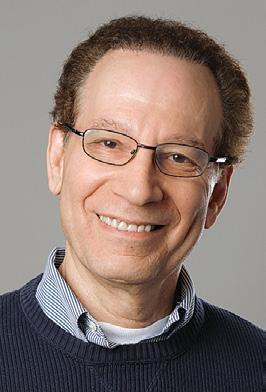

16 whatsupwinnipeg.ca November 2022
Continued from page 1
Stefano Grande Healthy Living
Tornado Haulers.
Nathan Zassman Natural Health
Rest in place: Those gravestones were meant to keep the dead from wandering
Aswe just passed the time of year where “graveyards” popped up in neighborhoods and front yards all across this great land, the fol lowing article by Jennifer Trudeau of Connecting Directors, seemed rather relevant and good to share with you.

Halloween is pretty much deathcare’s version of Valentine’s Day, with candy for everybody. And one of the most famous, most recognizable sym bols of the season is the humble headstone.
Why a headstone?
We have a lot of fun with this idea every Oc tober in the 21st century, but back in the day, placing gravestones directly over a body had a practical, if somewhat superstitious, purpose — to keep the dead from wandering, whether of their own volition or, later, due to the unfortunate practice of “grave-rifling”. In those days if you needed to keep the dead in (or the living out of) a grave, a table tombstone was the way to go.
Choices
“I’ve heard voices since the day that I was born
There were voices that told me right from wrong.
If I had listened, no I won’t be here today, Living and dying with the choices I’ve made.”
From the song ‘Choices’, by George Jones
Generally uncommon due mostly to ex pense, table tombstones were oversized, weighty and difficult or impossible to move, serving to protect the deceased from grave robbery as well as providing a large surface for longer inscrip tions.
Due to the sheer size and overall impracticality, it isn’t surprising that this sort of thing was far rarer than not… but the table tombstone is certainly memorable. Which is, af ter all, the point.
Ancient origins
The earliest forms of the same sort of perma nent markers we now know as “headstones” date from 3,000 BC. Some of those (Stonehenge, for example) were quite elaborate. As time went on, the practice and standard evolved to include all man ner of materials in many forms.
Often stones were erected in monu ment form to designated the resting place of entire families (we still see rem nants of this practice in North American
cemeteries to this day, with generally large monuments marking a region by surname and individual family members each having a smaller, personal stone). Originally reserved for the upper classes or persons of social distinction, over time such stone placement became less rarefied and more common.
Purpose and construction varied widely from region to region and period to period, influenced by the natural re sources of the area, religious edicts, and
cultural practices of the day. The Victo rian era, for example (1837-1901), with its grand revision of European attitudes towards death, saw the advent of pro fessional mourners, fanciful customs, and increasingly-elaborate grave mark ers inscribed with names, dates, familial detail, and scripture as well as likenesses and other symbology.
In North America, with our abbrevi ated history, headstones have historically been simpler, undemanding things built out of easily-acquired, workable local re sources like limestone, slate, soapstone, and sandstone. During the Civil War (1861-1873) grave markers were actu ally made of wood, while Greece, on the other hand, once had an unsurprising marble preference. Eventually granite’s durability made it an international fa vorite, which it remains to this day.
The Modern Take
Of course, nowadays if a headstone is wanted, each client is positively spoiled for choice. Whatever one can imagine can be had with relative ease, and tech nology has made pretty much anything you can imagine both possible and easi er to come by… bittersweet abundance in the era of online tributes.
stop drinking. He said that it was my choice, whether it would be while my heart was still beating or after I was dead. My choice.
When I chose to have my first drink, I had no idea how much that decision would cost me and how negatively it
would impact my life.
When I decided that I had had my last drink, I had no idea how much that decision would pay me and how positively it would impact my life.
Choices. What choices are you mak ing today?
Choices.
How many choices do we make every day? I started keeping track of the choices I was making after first wak ing up, most of them being made without thought. Do I make the bed before I head to the bathroom? Feed the cat now or later? Do I brush my teeth before I shave? When I put on my shirt, do I put it on right or left sleeve first? I quickly chose to stop count ing. There were too many and most really didn’t make any dif ference, although even though you can decide whether to put on you left or right shoe first, it doesn’t make sense to decide to put your socks on over your shoes. It is, though, still a choice.
If you do something often enough it becomes an automatic response to whatever situation you are in. I heard someone say that habit was the removal of choice. If that is true, does that mean that once a habit is formed it can’t be unformed? (Is that a word?) That is not a problem if it is a good habit, but what if it is a bad habit? I had many bad habits, some very bad habits, and I didn’t like them. Those habits had dug deep ruts into my brain and those ruts were full of potholes. My ride through life was anything but smooth. I chose to do something about that situation.
I have said that many people were involved in starting me up the road to recovery, and I wrote about some of the people and their gifts in the October issue of Lifestyles 55. Per
haps I should liken those people and gifts to the engineers who built the Trans-Canada Highway. Have you seen some of the photos and 8 mm films of how the highway was built, especially through the Rockies? If I decide to drive from Winnipeg to Abbotsford, I have many options. I could leave my place on foot, carry no food, no map, and no jacket. It is an option, but no one would make a decision that ill-advised, would they? I could drive only on back country roads, farm trails, and for estry roads once I hit the mountain ranges. That would be a better option, but it would not be guar anteed to get me to my destination. If I was smart, I would take a well main tained and equipped ve hicle, use an updated GPS, and take the most direct and safest route available. Why would I even consid er any option other than the most logical? Well, it took me quite a while to decide to take that route.
The gifts I received were the vehicle, the road, the tank of gas, the big road sign the read “Ab botsford, this way.” But I still had to choose to put all those gifts to use.
To slowly die, alone, in the middle of a snow filled field, starving and gradually freezing to death because of a choice would seem quite unsmart, yet for so long that is the route I was on. Why would I decide on anything other than the best option?
My journey up the road to recovery started with four choices. When the WFPS showed up at my place, I chose to get into the back of the ambulance. I chose to go to detox when that op tion was given to me, and I chose to go to the Addictions Foundation of Manitoba (AFM) for their 28-day inhouse treatment. And I chose to stop drinking. I don’t say that I’ve been so ber for 15 months. I tell people that for 15 months I have chosen not to drink. Saying that I am sober does not indicate that it is my choice.
Someone once told me that they could guarantee that I would one day
IF YOU ARE A SENIOR. . . . . .
You should consider having the following in place Will
The preparation of a will may seem like a daunting task, however, it is essential to ensure that your property is disposed of according to your wishes upon your death. If you pass away without a valid will, the law states what is to happen to your estate.
Power of Attorney
A power of attorney is a document which appoints an individual to handle your affairs in the event you become mentally incapable of making your own decisions. Nothing prevents you from continuing to make your own decisions while you are still competent.
A power of attorney is an extremely valuable document to have in place in case anything happens to you which affects your mental ability, such as a stroke, coma or dementia.
Health Care Directive (Living Will)
A health care directive, commonly called a living will, is a document which appoints an individual to make decisions with regard to your health care only, while you are alive but unable to express your decisions yourself. This document is distinct from a power of attorney and deals only with health care decisions such as whether life sustaining treat ments, such as CPR or blood transfusion, should be continued or withdrawn.
Standard Fees*
Seniors
Last Will and Testament $225.00 $200.00
Power of Attorney $175.00 $150.00
Health Care Directive $ 75.00 $ 50.00
* plus GST and PST - Rates are per person.
Home and hospital visits are also available $250.00* (includes both meetings) *plus GST and PST
TACIUM VINCENT & ASSOCIATES 206 St. Mary’s Road, Winnipeg, MB R2H 1J3
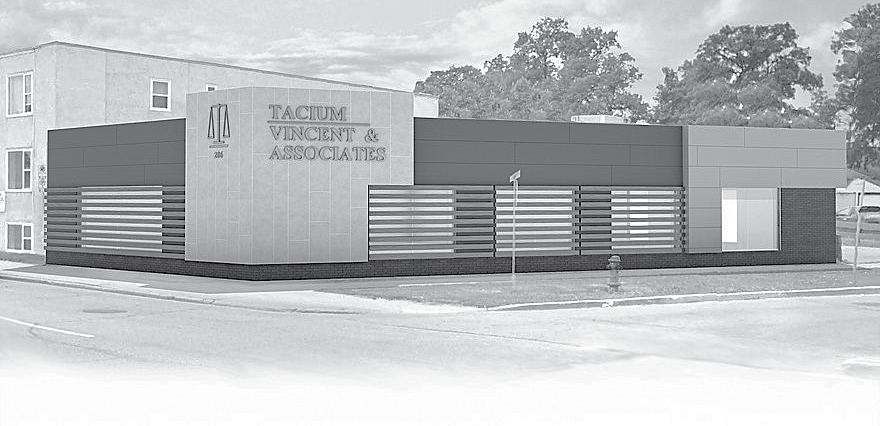

DAVID G. VINCENT (204) 989-4236
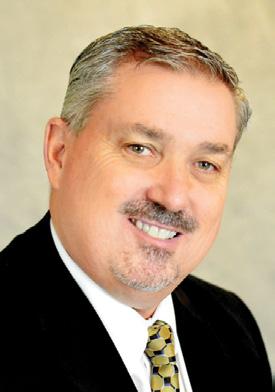
www.taciumvincent.com

November 2022 whatsupwinnipeg.ca 17
Rick Duerksen
Reach
Michael Gibbens
Seventy years of music and joy
Last month, October 2022, I turned 70 years old. For me it was a milestone birthday that gave me pause for reflection. I have always defined my life by music.
Born in 1952, I was at the perfect age to witness firsthand the tidal wave of cultural upheaval that took place beginning in the 1950s. My ear liest memories of music came from the radio in our kitchen. As a pre-schooler, I played with my trucks and toy soldiers on the kitchen floor. My mother would have the radio on all day. Not too loud because my father, a CPR engineer, of ten worked nights, but just enough for me to hear down on the linoleum floor. CKRC, CKY and CJOB (back when they played music), offered my intro duction to music of all varieties. There was no narrowcasting to specific demo graphic groups or genre-specific stations like today. It was all just music and as the 1950s wore on, I began hearing rockabilly and early rock ‘n’ roll mixed in with country music, ethnic music and ‘50s hit parade pop. The distinctions meant nothing to me. I was just as easily entertained by Frank Sinatra and Rosemary Clooney as Ernst Tubb or Fats Domino. Radio was my audio window to the wider world.
By the latter 1950s, rock ‘n’ roll had infiltrated lo cal radio station playlists. Elvis Presley, Buddy Holly, The Platters, Chuck Berry, Connie Francis (yes, she sang rock ‘n’ roll) entered my musical lexicon. Unbe knownst to me at the that time, music aimed directly at the growing teenage baby boomer market was rapidly squeezing out Mom and Dad’s recording artists on the pop charts. CJOB made a bold public statement that they would not play rock ‘n’ roll. The other two sta tions, however, jumped in headfirst embracing the new music genre and endearing themselves to local teens. Between CKY and CKRC, listeners tended to play fa vourites. For me, my transistor radio dial was more of ten on CKRC with the likes of Doc Steen, Jim Christie, Ron Legge and Jim Paulson becoming a part of my listening routines.

My brother Ron is three years older than me and his musical coming of age was with early 1960s surfing and hot rod songs. He owned records by The Beach Boys, The Hondells and Jan & Dean. That wasn’t my music (I didn’t surf or drive a car and wasn’t quite ready for girls just yet). My own music epiphany came on the evening of Sunday, February 9, 1964 when The Beatles made their North American debut on The Ed Sullivan Show. As someone once said rather prophetically, “It
was like our lives were in black and white the day before The Beatles appeared on Ed Sullivan and the day after, our lives were in technicolor.” I clearly recall Monday, February 10 morning recess at Rockwood School. I was in Grade 6. On the playground, girls were gather ing in groups to gush over their favourite Beatle and the one they wanted to marry. On the other side of the field various gatherings of boys were hatching plans to form rock ‘n’ roll bands. I was in one of those latter gatherings.
As rocker Tom Petty recalled, “The minute I saw The Beatles on The Ed Sul livan Show — and it’s true of thousands of guys — there was the way out. You get your friends together and you’re a self-contained unit and you make music. And it looked like so much fun. It was something I identified with.” Me, too.
I got my first guitar, a brand new elec tric Harmony Silhouette solid body two pickup model, along with a second-hand Harmony amplifier, in early 1965. $125 for the guitar and $50 for the amplifier, serious dough in 1965. I told my parents that starting first on an acoustic guitar, the tried-and-true method of learning to play back then, was a waste of time. Better to go straight to the electric model. Besides, it made more noise.
The day my dad placed that Harmony guitar in my hands my life changed forever. Music became my ob session and set the pattern for my life. While enjoying a thirty-year teaching career and receiving awards for my classroom work, I offered after school guitar classes to hundreds of students over those years. In 1991, while teaching at St. John’s-Ravenscourt School, I pioneered the popular extracurricular Rock Show program that grew from a handful of students to over 100 students annually by the middle of the decade and carried on even after I retired from the classroom. The Rock Show program continues on to this day. It’s part of my legacy at SJR.
A year after acquiring my first guitar, I was playing in bands with neighbourhood buddies and junior high friends. As I moved from band to band, most folding before ever playing a gig, I progressed to groupings of more serious and more talented players. It was like a musical Darwinism, a survival of the fittest. I graduated from community club and high school dances to pubs, clubs, concert venues and road trips by the start of the 1970s in bands like The SRO, Pig Iron, Red Ryder, Euphoria, Fabulous George & The Zodiacs, Wet Pants, Blakewood Castle and Get Back.
Highlights of my playing career include appearing on CJAY TV’s Young As You Are and CBC TV’s Diane (singer Dianne Heatherington’s nationally-television show), performing at the old Arena, the Centennial Concert Hall, and Winnipeg Blue Bombers football sta dium, the ManPop 70 Led Zeppelin pop festival, Lake Riviera Pop Festival, the Assiniboine Park Love-In, Ta ché Hall and UMSU’s East Gym and more. Along the way I made many lifelong friends. Sadly, some of since passed away.
Once I hung up my guitar and snakeskin boots, I began writing about music history both locally and in ternationally. I found a whole new career documenting the music I still loved.
For my 70th birthday, I organized a party at Times Change(d) High and Lonesome Club. My former stu dent, John Scoles, who owns the club, gave me the room for the early evening and I played guitar with many of my former band mates and contemporaries. The event was entitled “Jammin’ With John”, my last hurrah onstage. It was a joyous event and a perfect way to celebrate a milestone birthday. Long live rock ‘n’ roll.
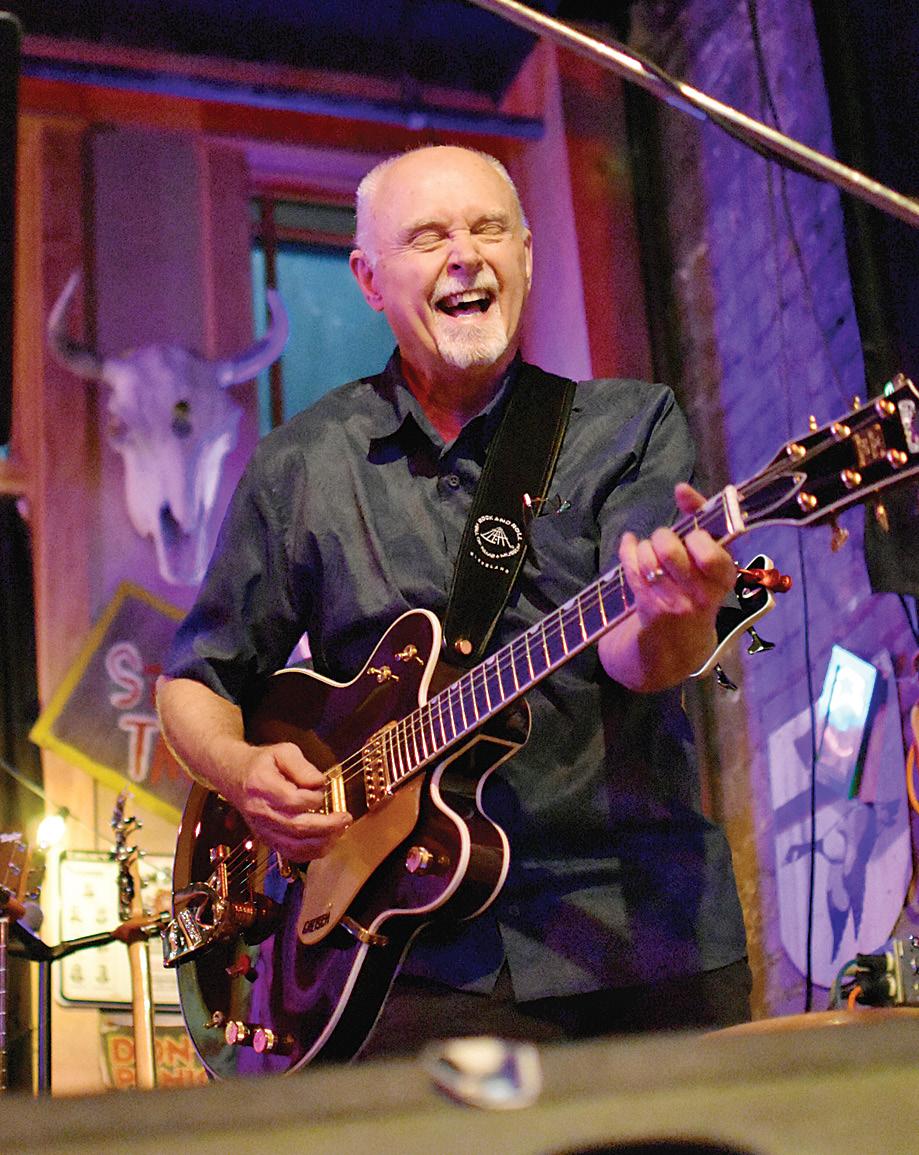
John Einarson is author of Heart of Gold: A History of Winnipeg Music.

How to become a family legend
Theeasy access to DNA testing seems to have cre ated a whole new interest in family history and origins. By now we have all heard of families sur prised by connections to previously un known brothers and sisters, cousins and aunts through the growing network of DNA information that is available with a few simple steps. Some of the results that people get from these DNA kits are a bit confusing and confounding. New broth ers and sisters appear in a family, and cultural and geographic origins are recon sidered on the basis of the results of the testing. Some of the information can be completely confusing. People who have always thought of themselves as coming from a certain region of the world are surprised to find that their genetic infor mation seems to indicate a completely different place of family origin. It is more unsettling than people realize at first. We do seem to want to know where we belong and where our family is rooted.
told at an event that includes children of varied ages.
It strikes me as increasingly important to find ways to guard and preserve family stories for the benefit of future generations. It has often struck me that certain individuals seem to have an outsize presence in family lore. Part of that can be explained by better written records about certain family members. These records can be in the form of diaries, collections of letters, autobiographies, newspaper articles, books written, degrees obtained, criminal and other court records, prop erty sales information, wills, bankruptcy documentation, recipe books, obituaries, family Bibles, portraits, photographs, and household inventories.
Trudy Schroeder Random Notes
In earlier times, it was most likely that young people would create the next generation with someone from the same church, community, or region. These days it is far more possible for people to have a wildly mixed range of ancestors. In so many ways that is such a wonderful development for the human race. However, many people do seem to have an ongoing interest in the stories of their ancestors, and that cannot be told through DNA testing.
Every family has stories about members of previous generations that are passed down from one generation to the next as inspirational material or cautionary tales. These stories are often told around the table at family re unions. The story may be quite wildly embellished for in creased impact or told with the kind of family shorthand that indicates that there is more to the story than can be
When I visited the Rembrandt House Museum in Amsterdam several years ago, I was struck by the importance that Rem brandt’s bankruptcy proceedings had for the information available to art historians of future generations. Unfortunately for Rembrandt, he ran into significant financial challenges and was declared bankrupt. As part of this process a detailed inventory of all of his possessions was conducted. This provided a list of the many paintings he had collected of other artists of the period, of his own art works that were in place in his studio at the time, and a listing of all of the supplies great and small that were to be found in the household of a previously very affluent artist.
I am not advising bankruptcy proceedings as a way to provide a record for coming generations, but finding ways to preserve the stories of our generation for the in terest and benefit of future generations is a valuable and interesting process. Your diaries, your letter collections, your records, are all part of what future generations will consider to be their family heritage. Make it interesting, thought provoking, and perhaps funny for family mem
bers in the future to track down the accomplishments and foibles of your generation.
In some ways, it all comes down to having some thoughts about the nature of the stories we pass along as we gather with family members in the holiday season.

Quite a number of years ago I purchased a painting from an artist I was working with in Ottawa. She had lost her mother in the previous year, and she had made a painting of herself and all of her siblings seated around a table at the first Christmas after the mother’s death. Each sibling has a menu of their personal favourite foods the mother had prepared written on their shirt, and each sibling had a different piece of pie that was their favourite that had been prepared by the mother in previous times.
We can all do our part to share family recipes, family stories, and family lessons. This is the time to consider how that can be done.
Trudy Schroeder provides project planning and manage ment services to the community through Arts and Heritage Solutions.
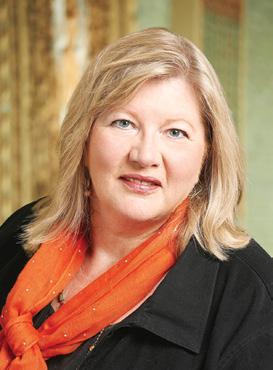
18 whatsupwinnipeg.ca November 2022
John Einarson joyfully playing at the Times Change(d)’s Jammin’ With John birthday bash. Photo by Lisa Lewis.
John Einarson Local Music Spotlight
An Ottawa artist created this picture of her family at Christmas.








November 2022 whatsupwinnipeg.ca 19 Find out more at localgardener.net Official English Language Magazine Follow us on social media and find out what we’re up to! Find out more at www.localgardener.net Local GardenerCanada’s Coming Soon! DETAILS AT SOUTHBEACHCASINO.CA










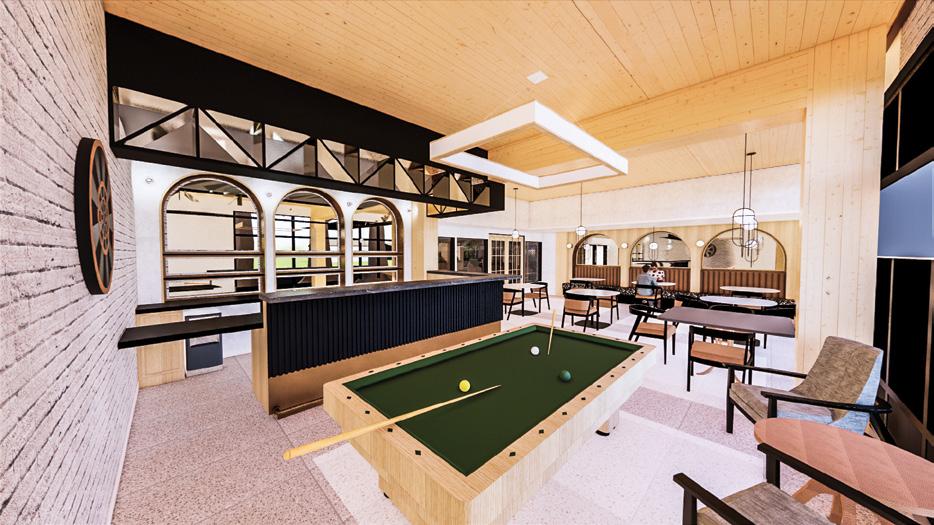

20 whatsupwinnipeg.ca November 2022 204-979-8289 info@BergenGardens.ca 1475 Molson Street, Winnipeg Newly constructed, and designed with the latest findings in aging research, Bergen Gardens offers a variety of customizable service packages to suit your lifestyle, including: Serenity Salon & Spa, Empire Cinema, Hometown Spirits Tavern and Men’s Shed Group, and much more. Gardening options Using a Person-Directed Care philosophy we’re building a community that Bergen Gardens, setting a new standard in senior living, offers the perfect transition into a convenient and well-tailored lifestyle.


























































































































